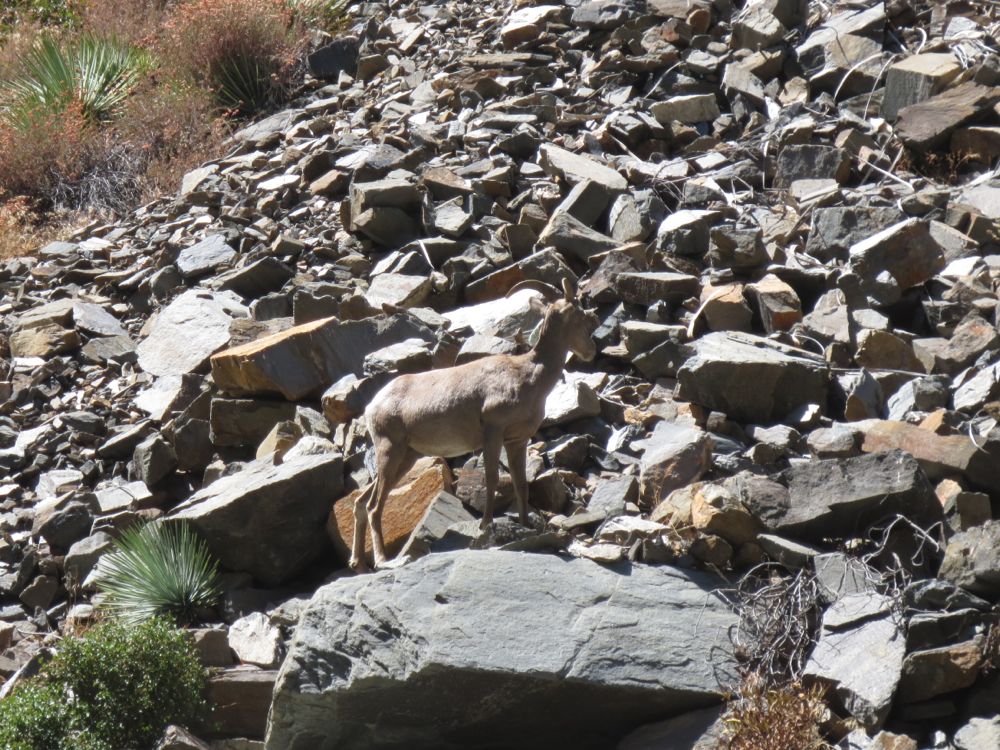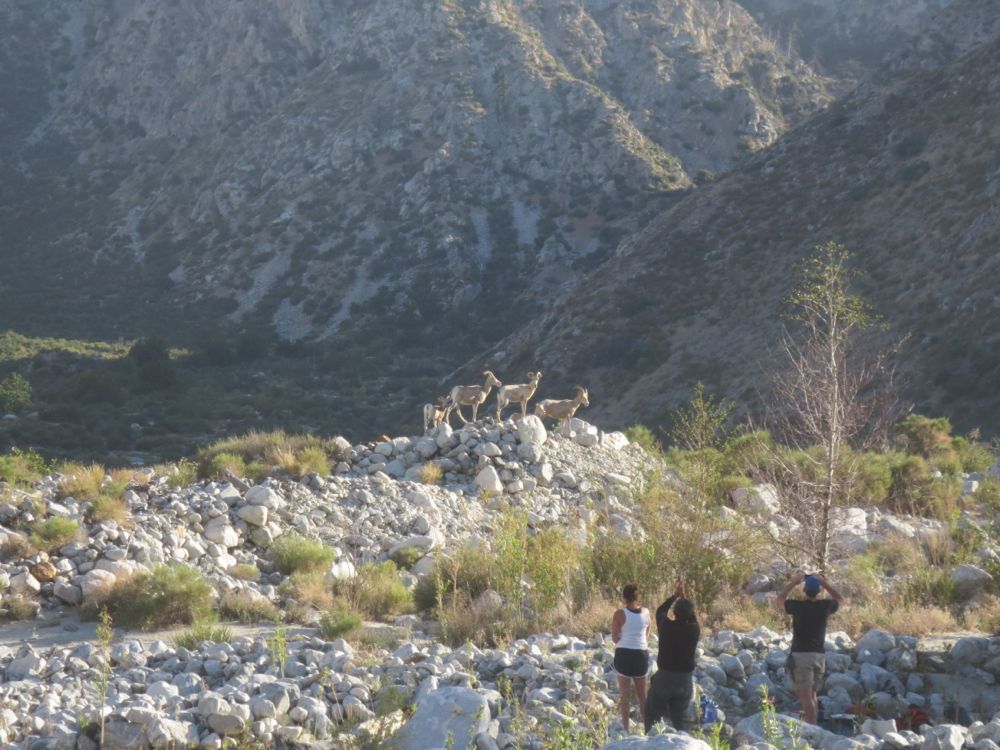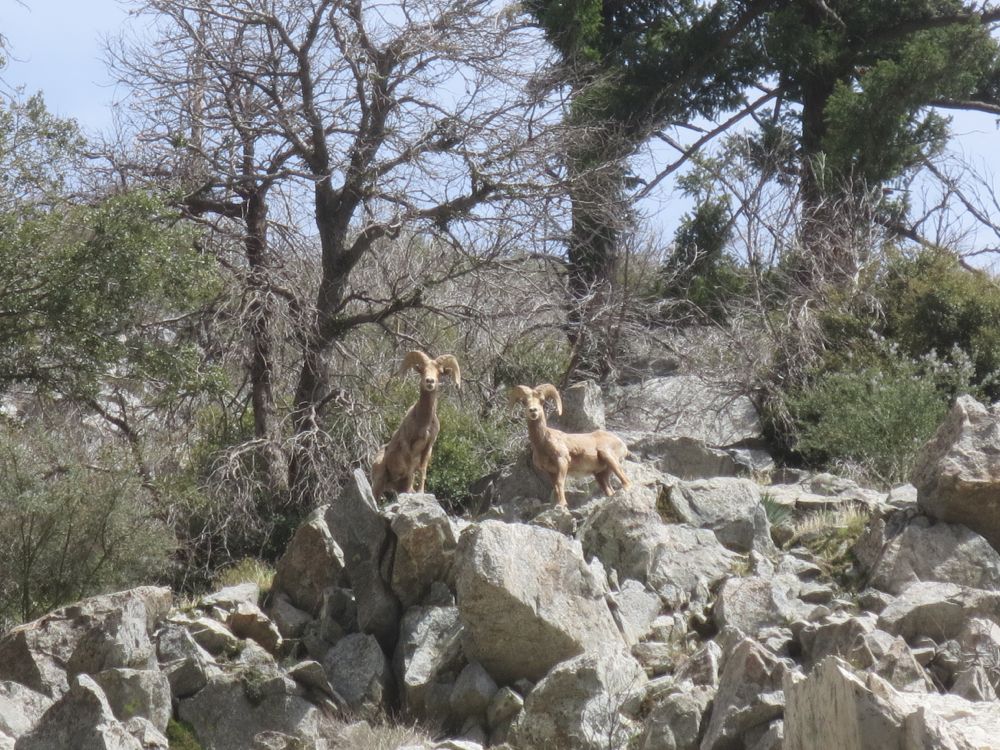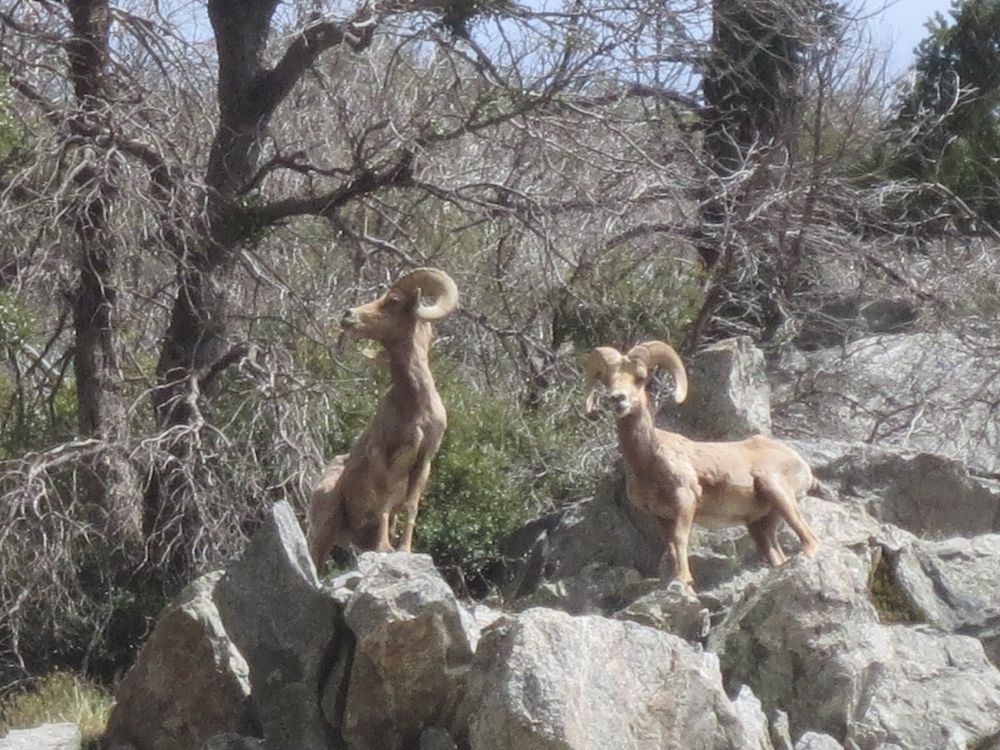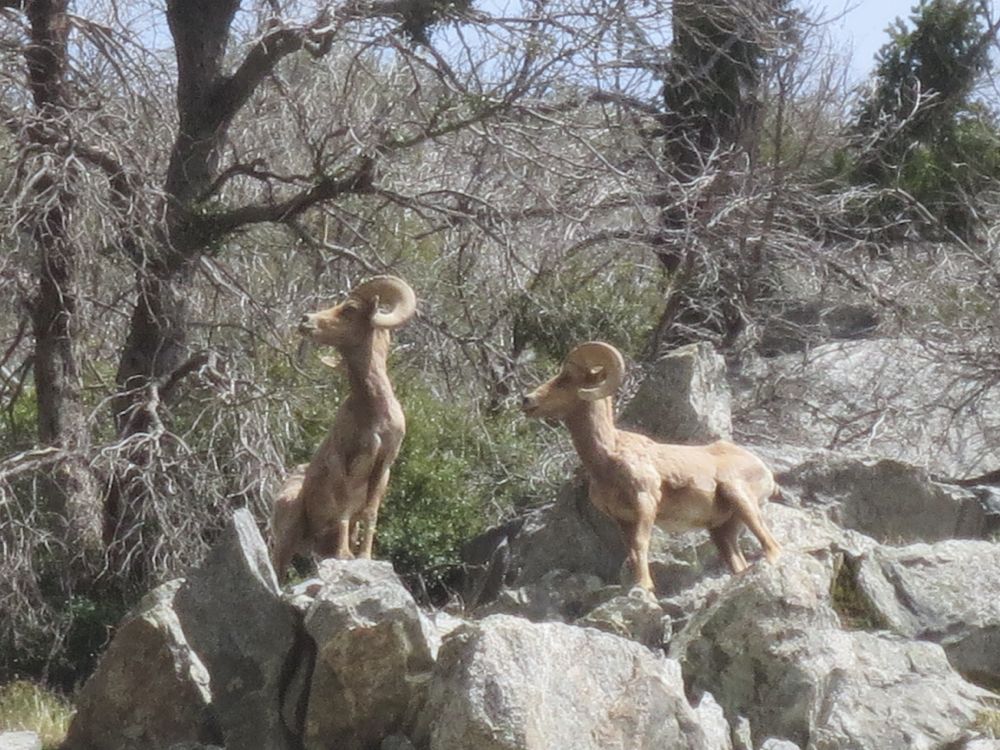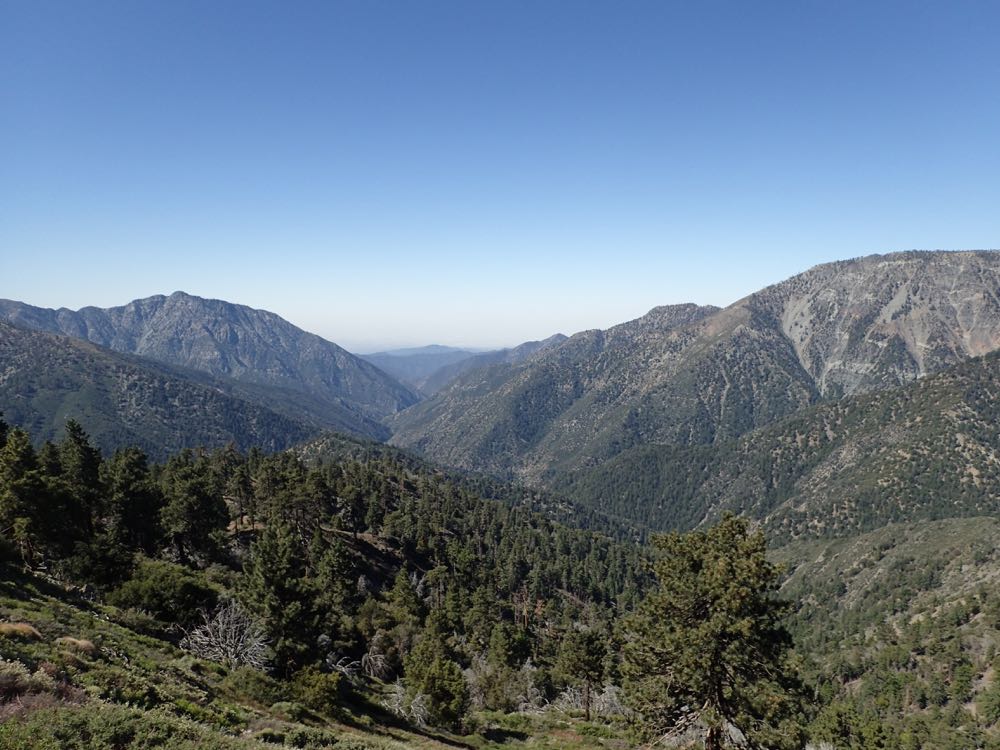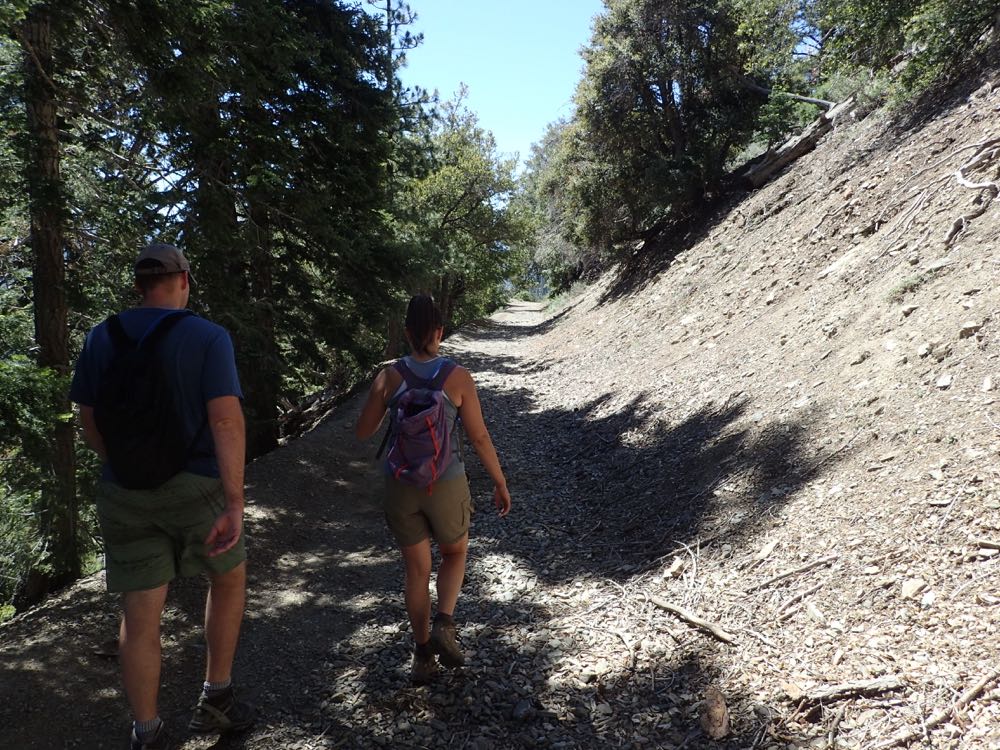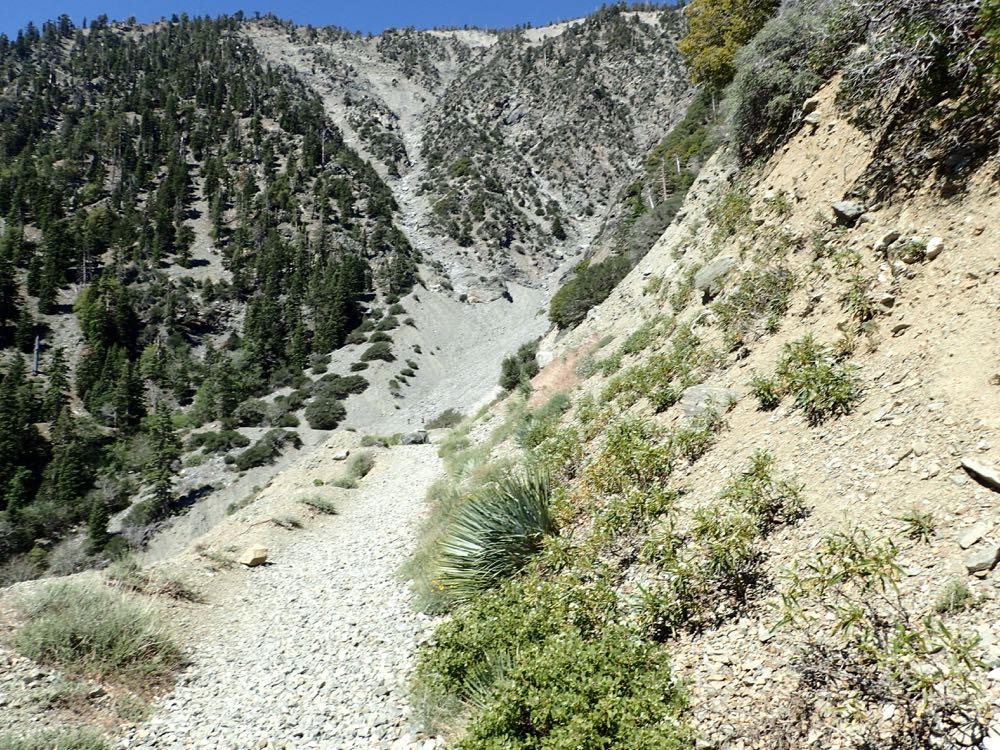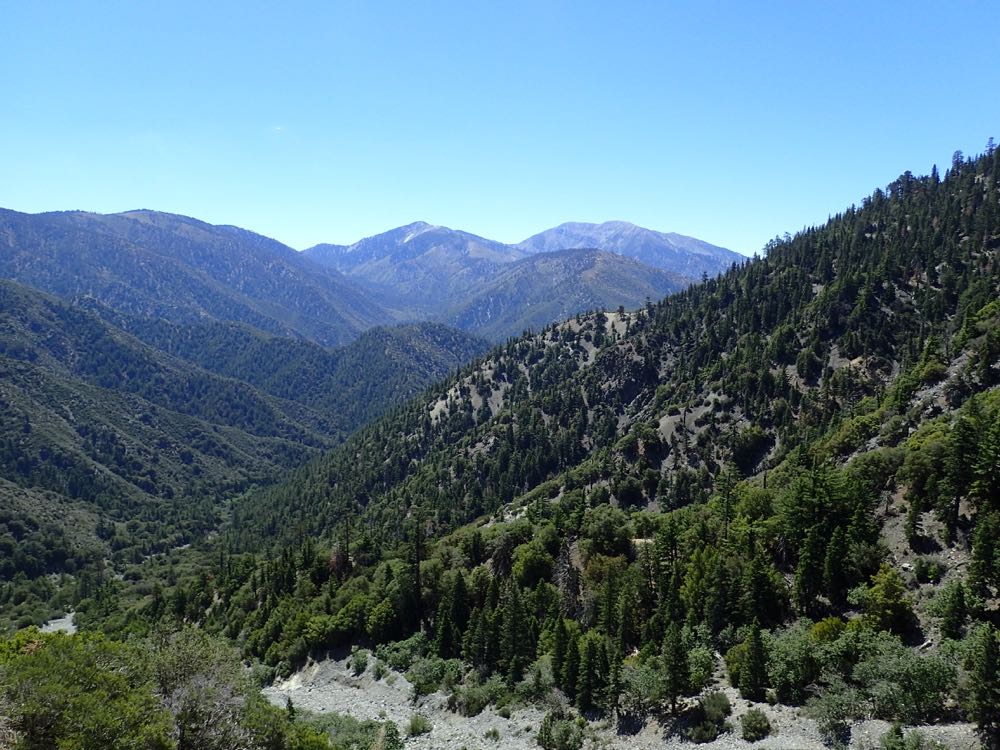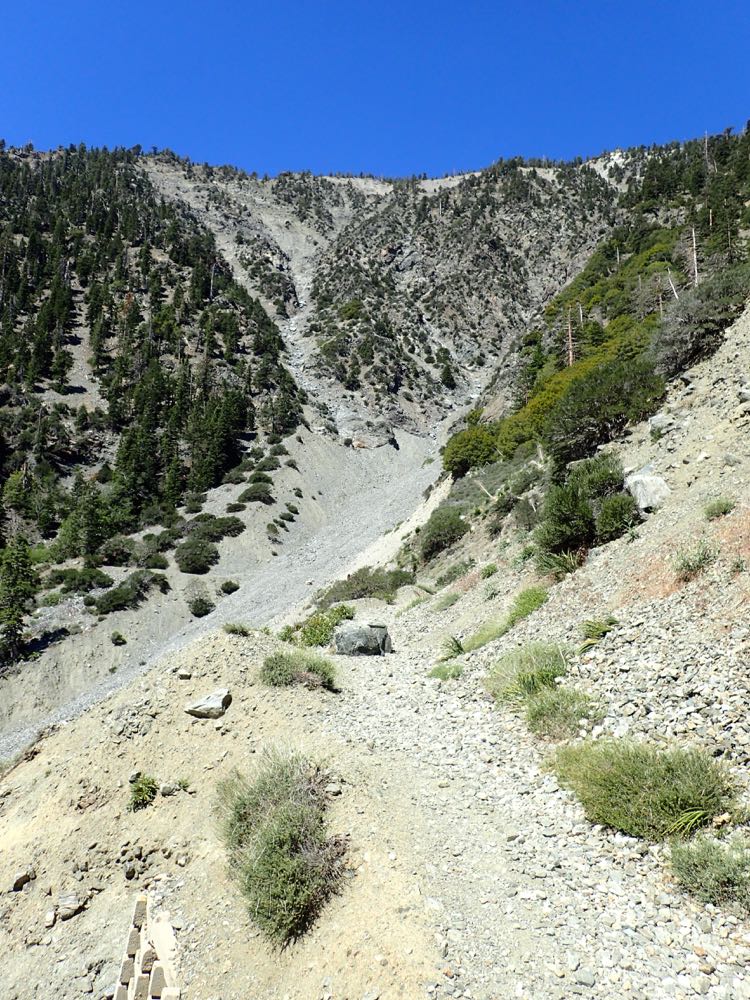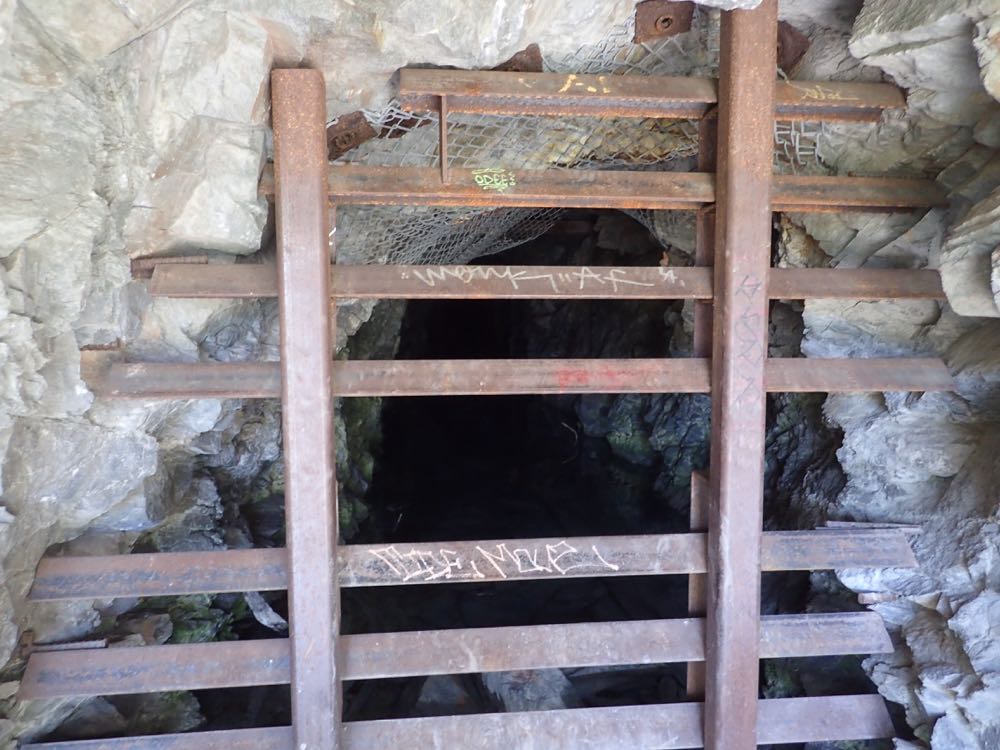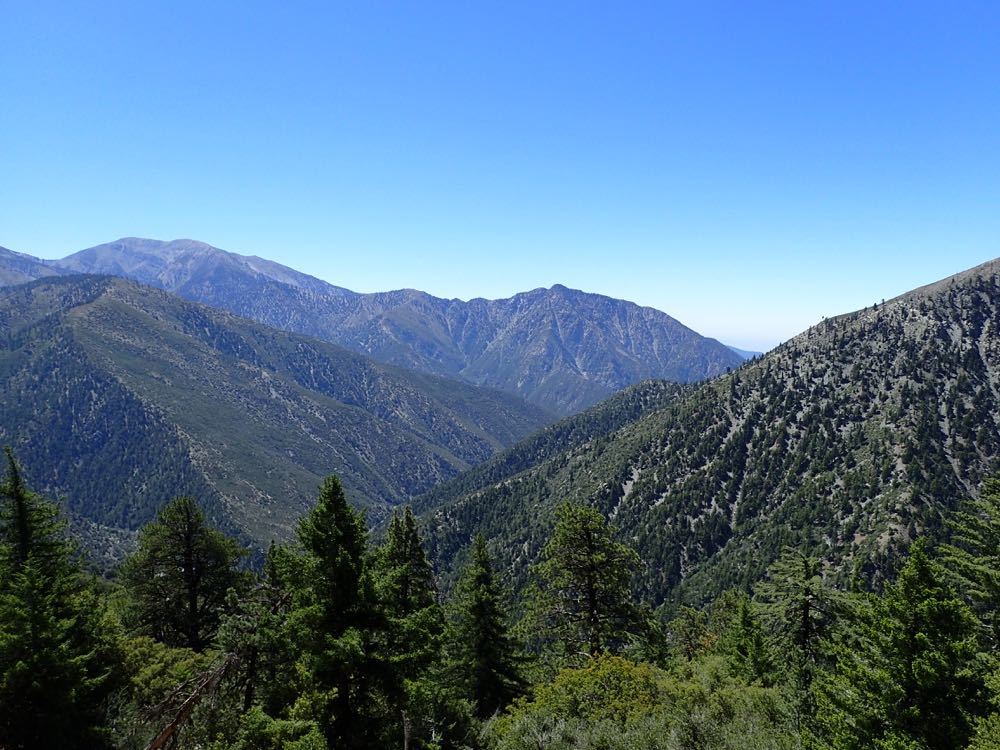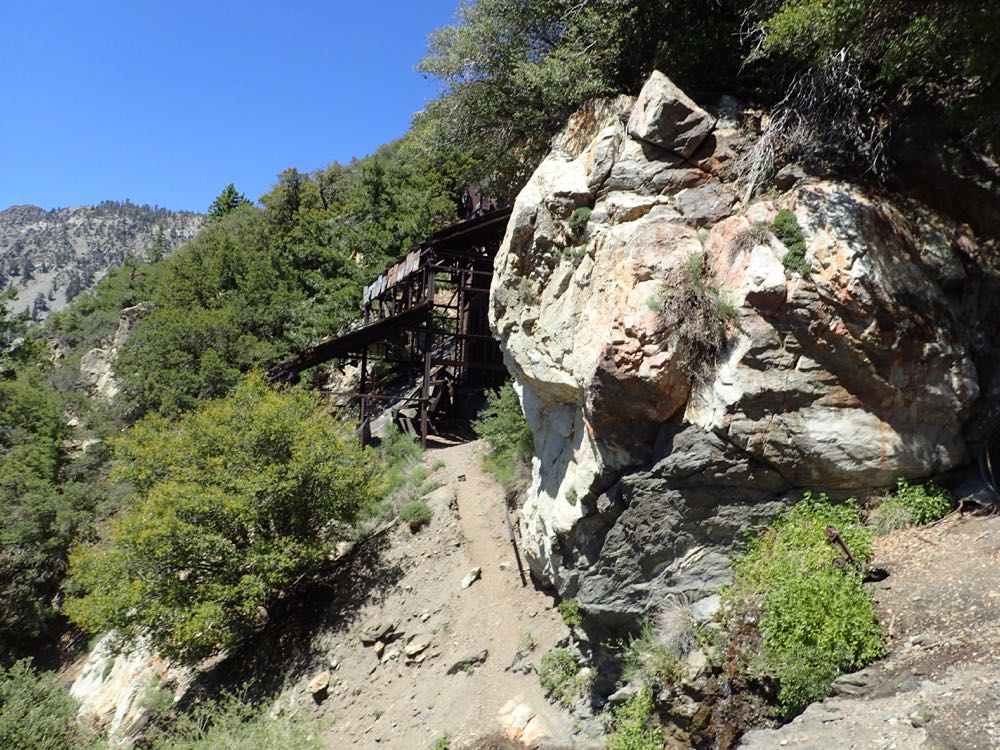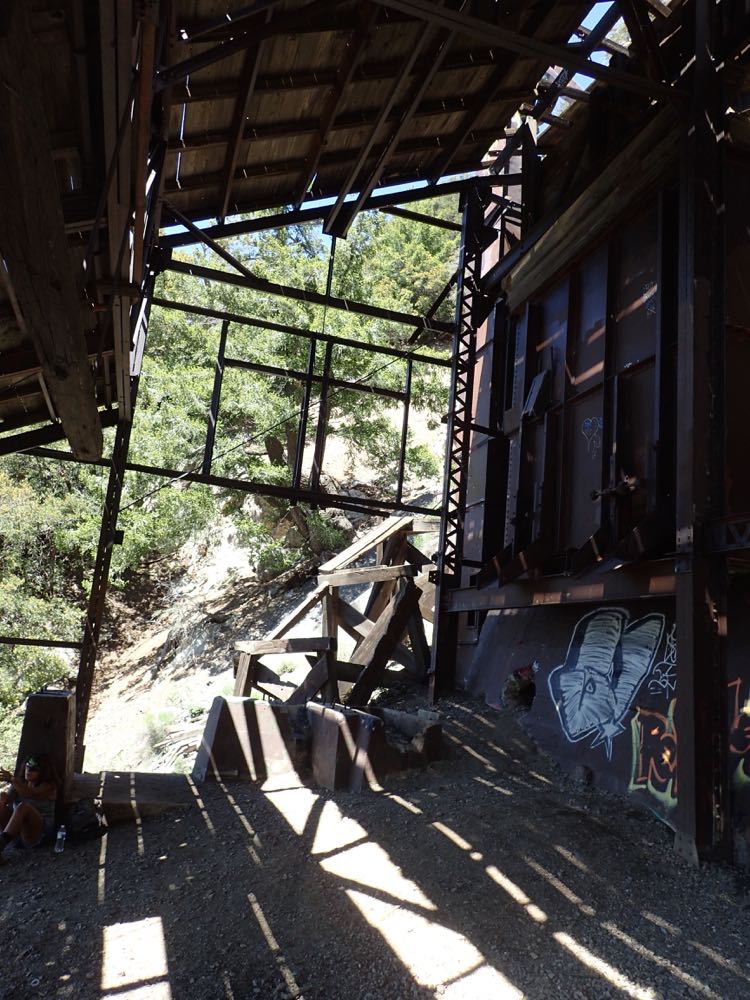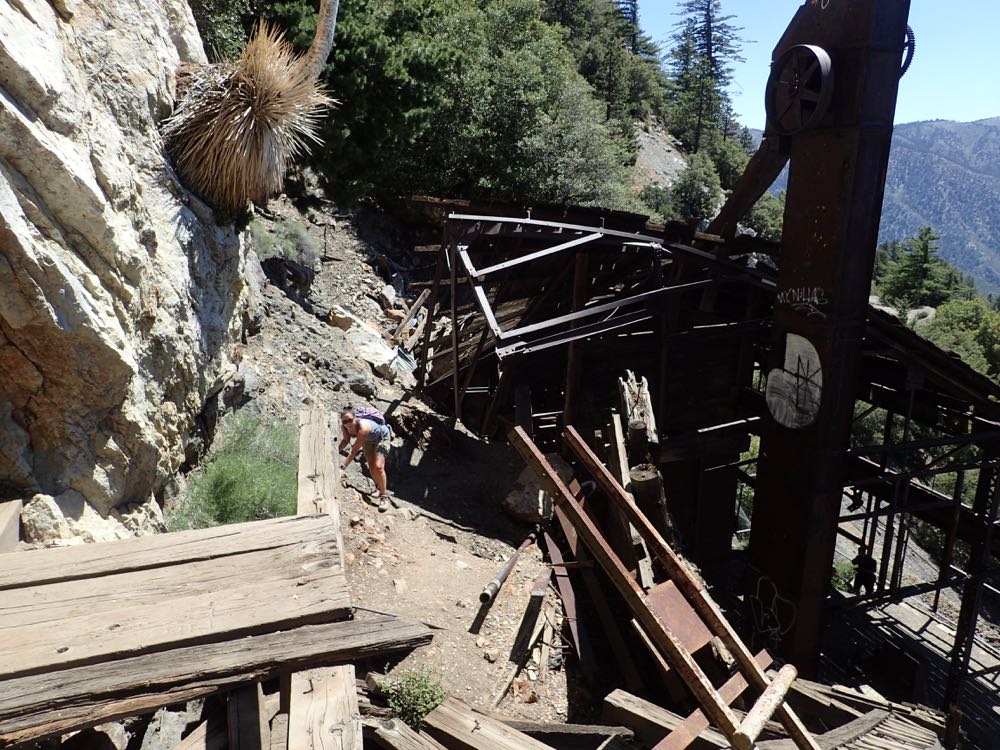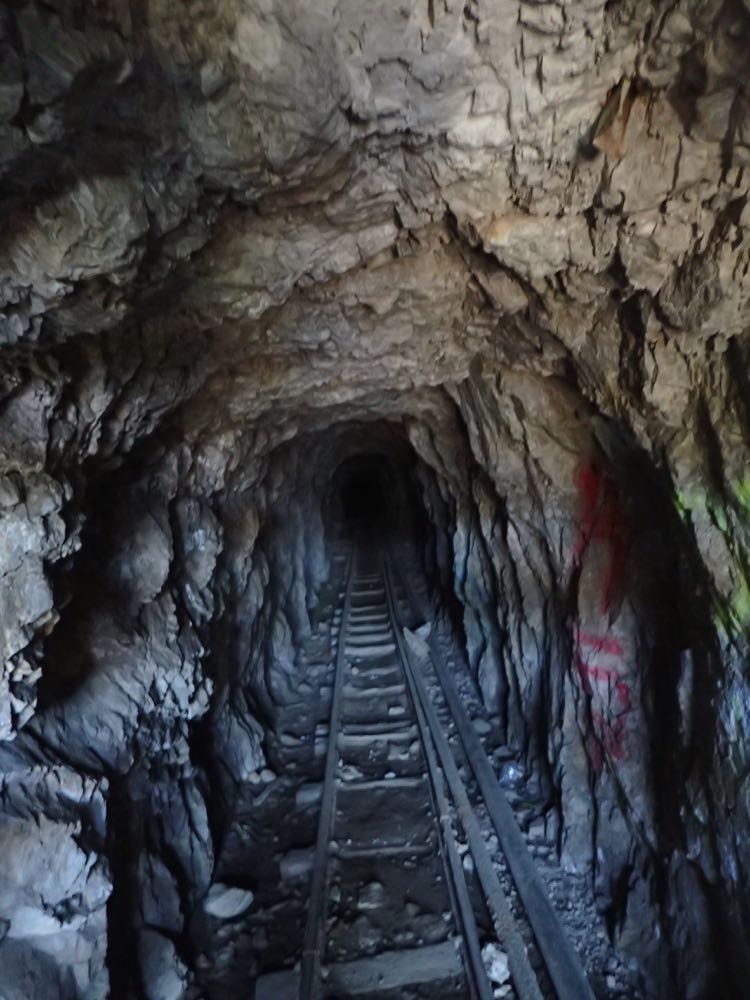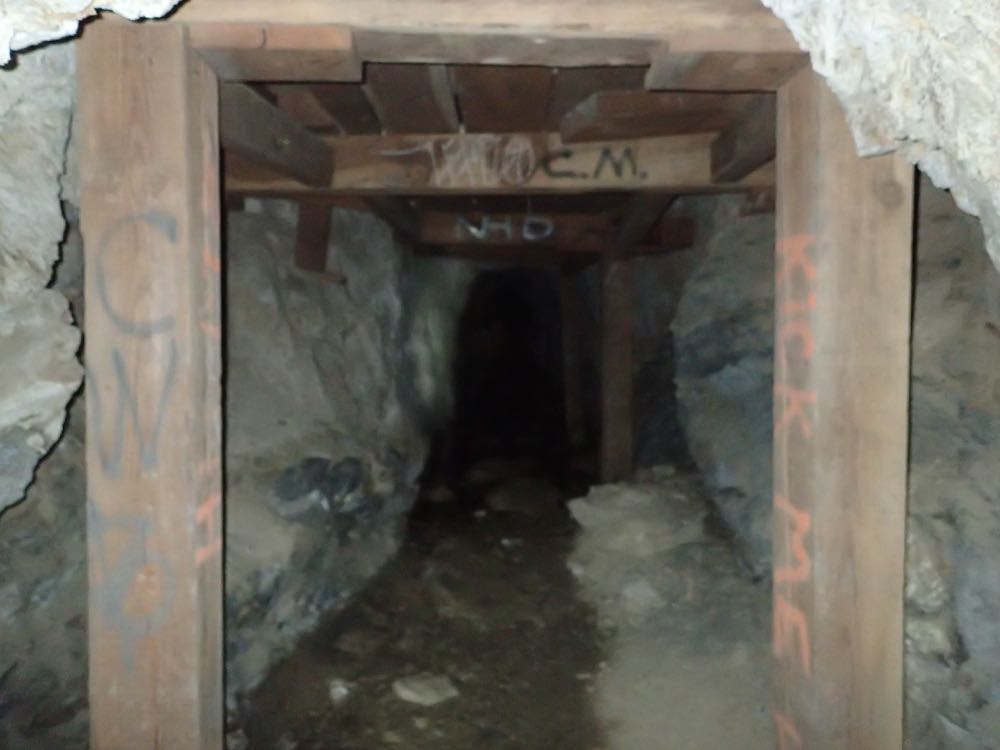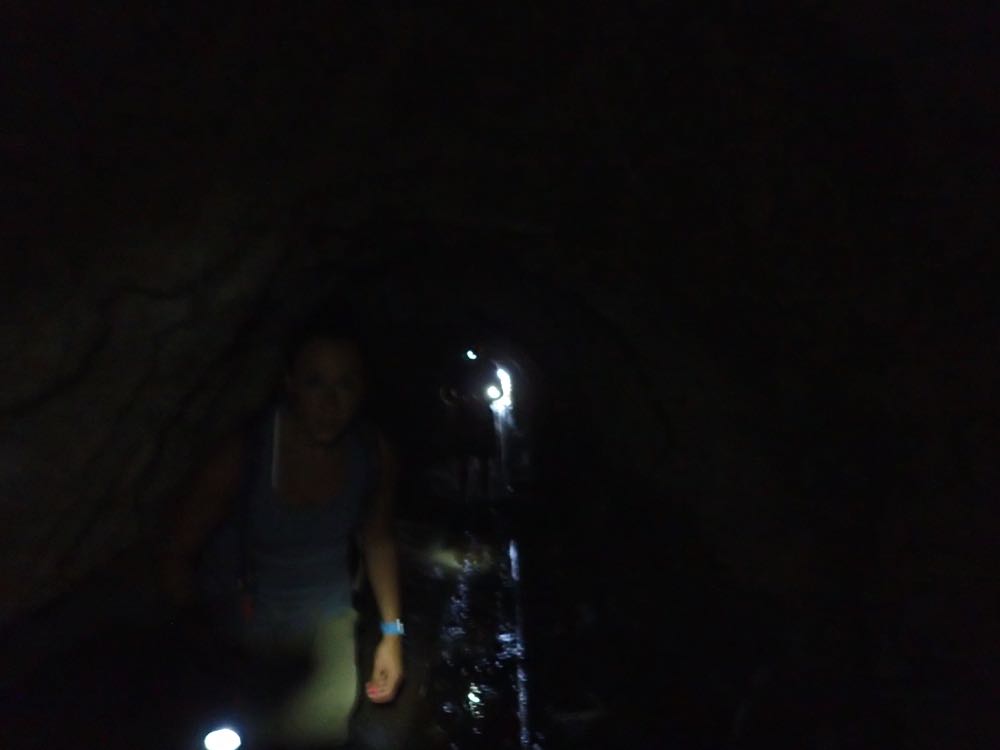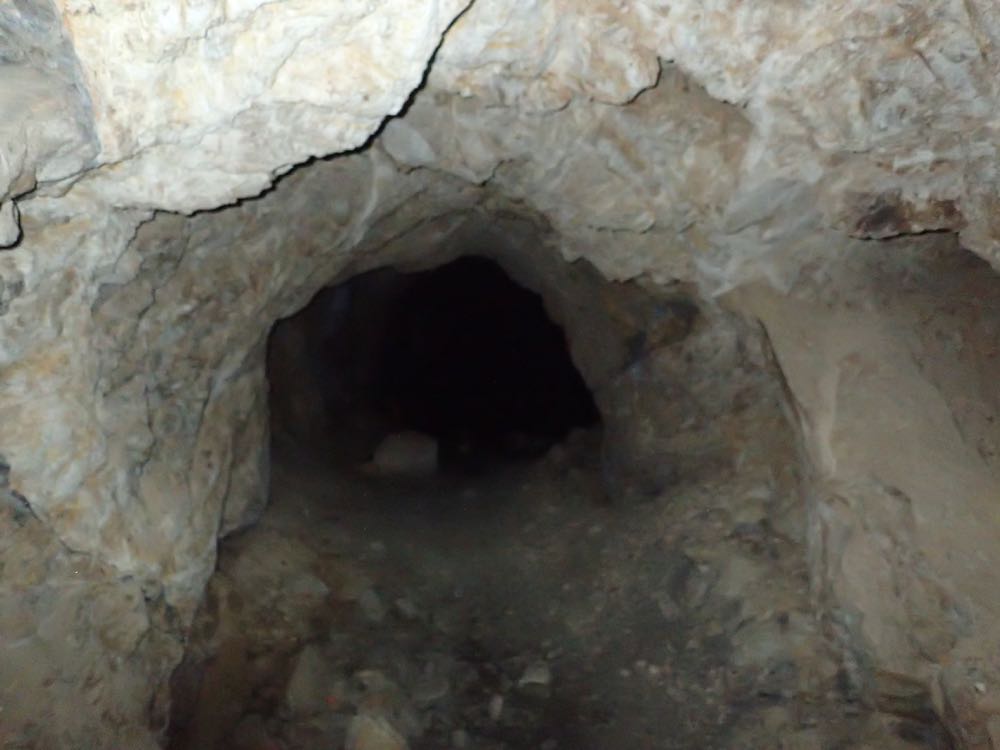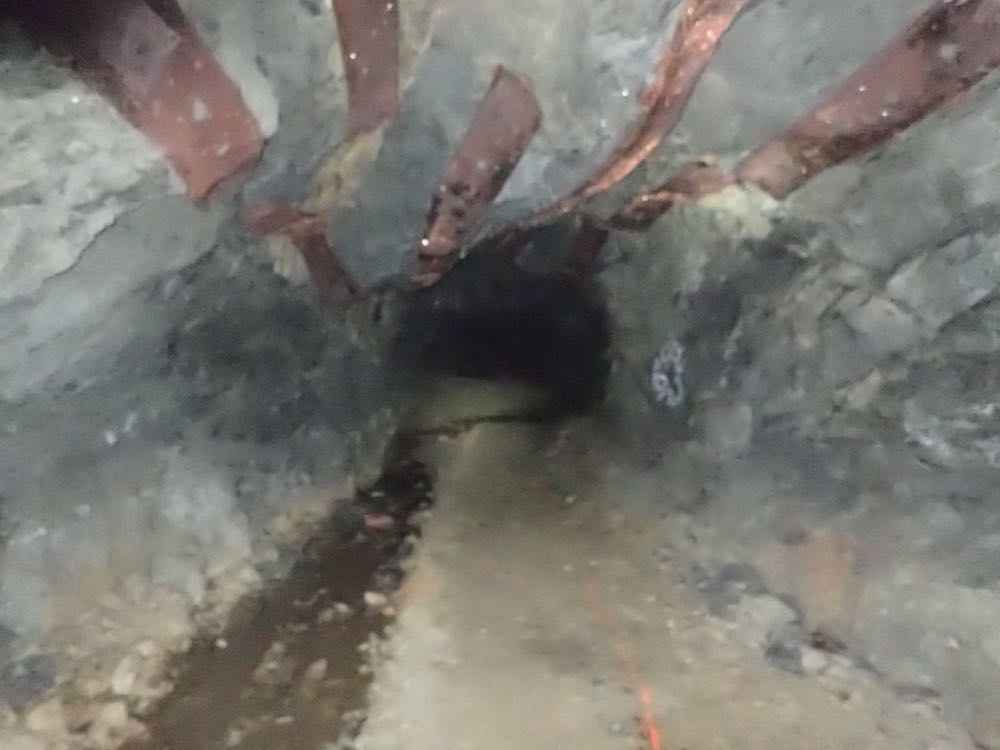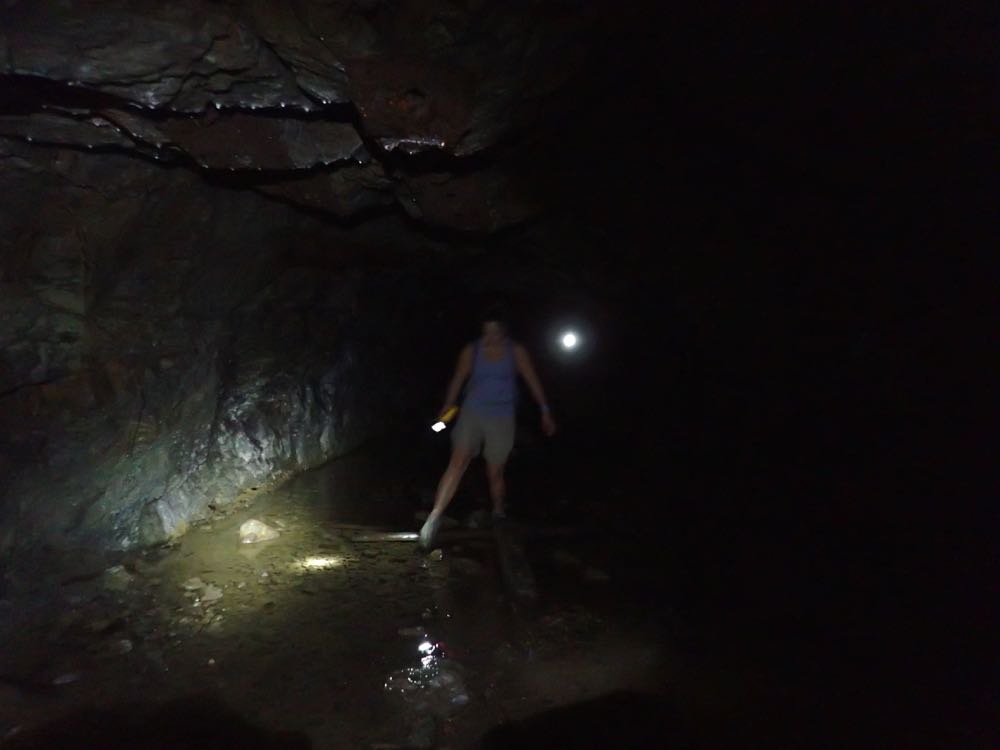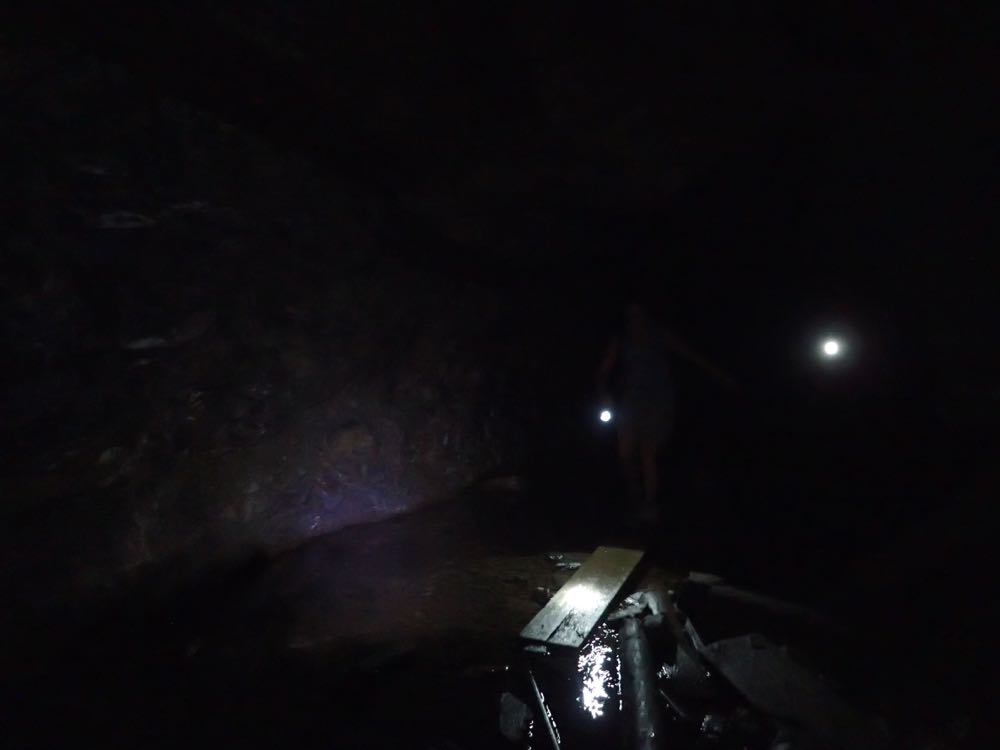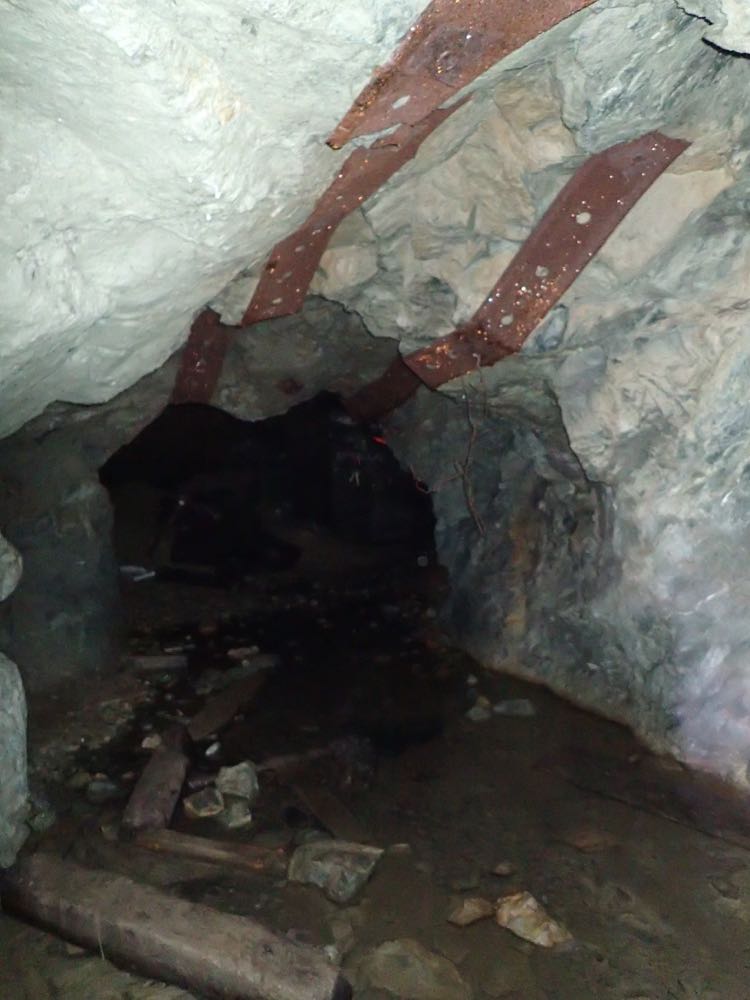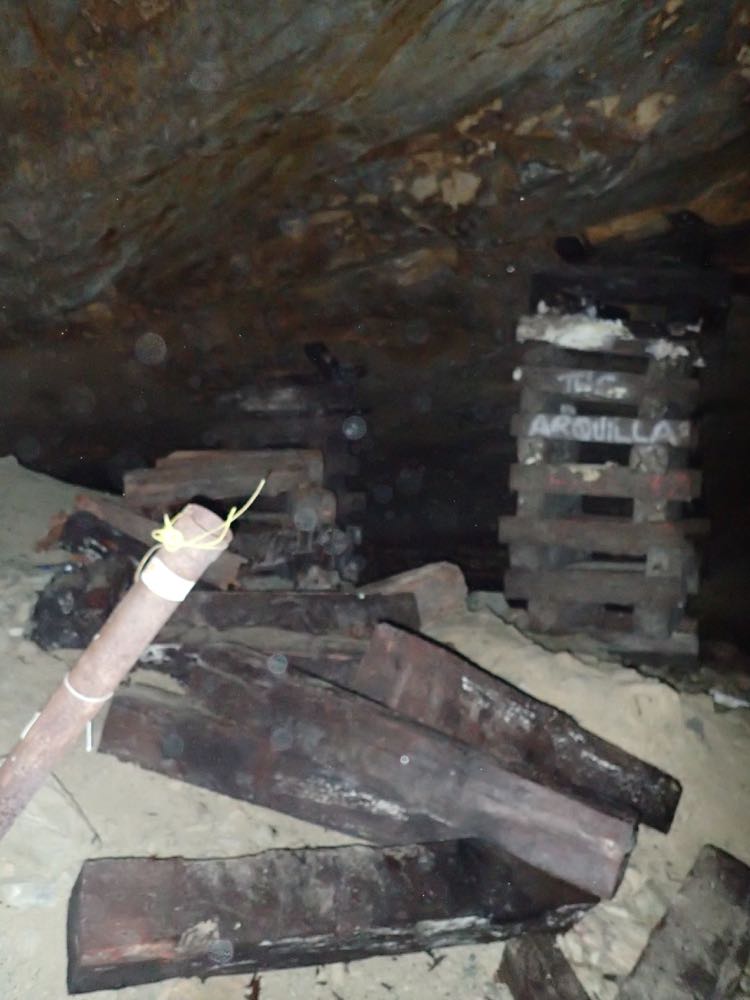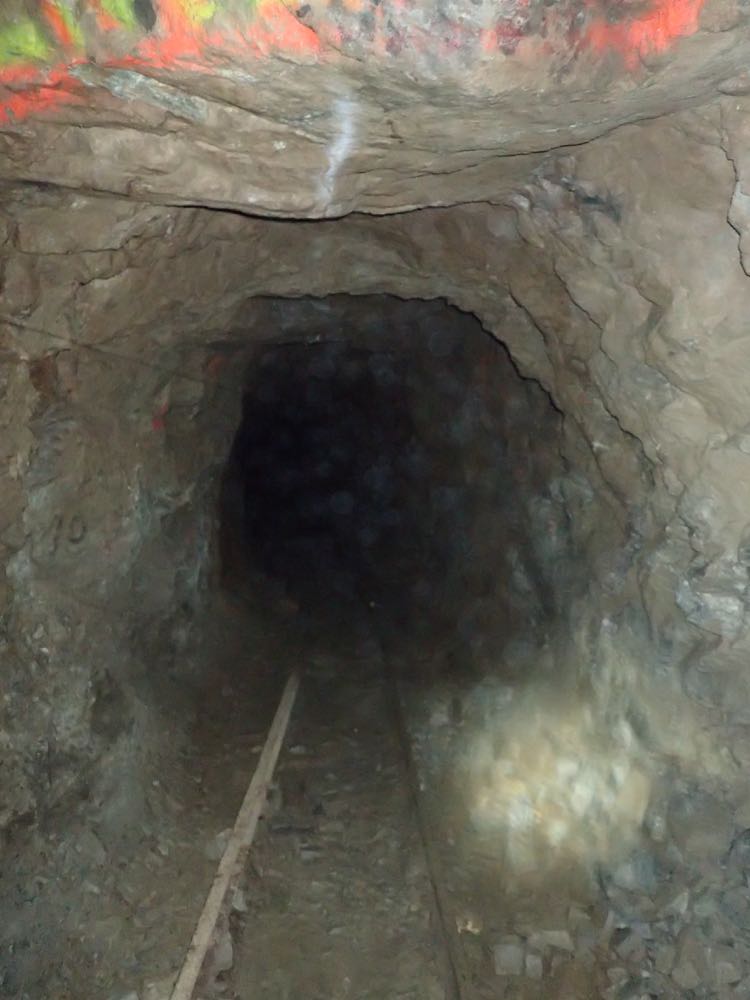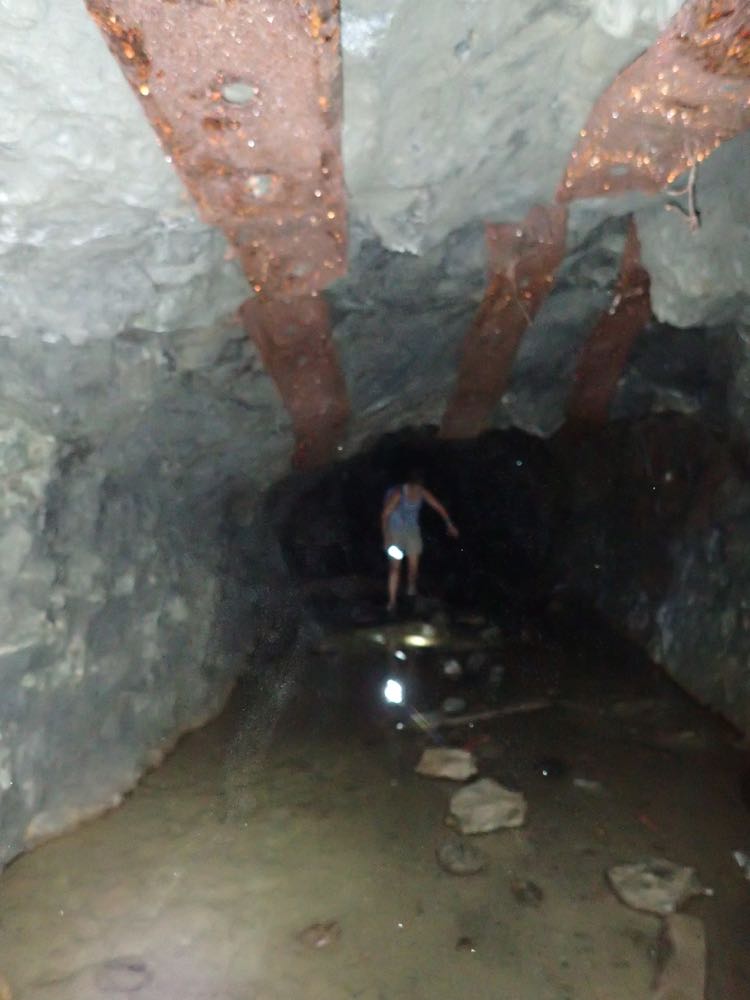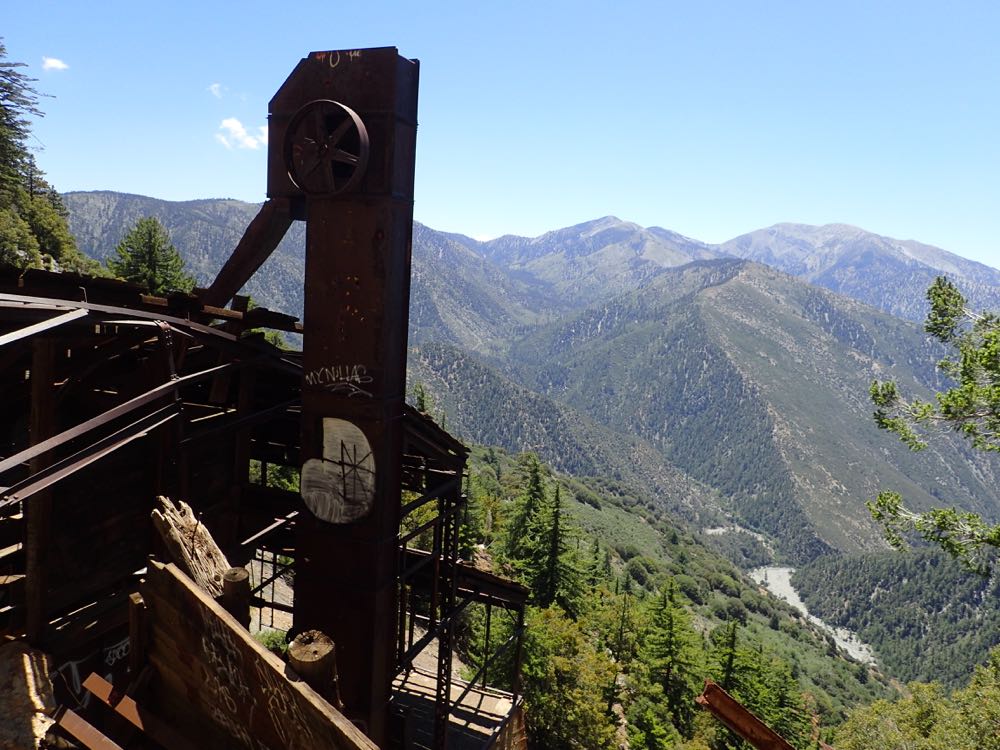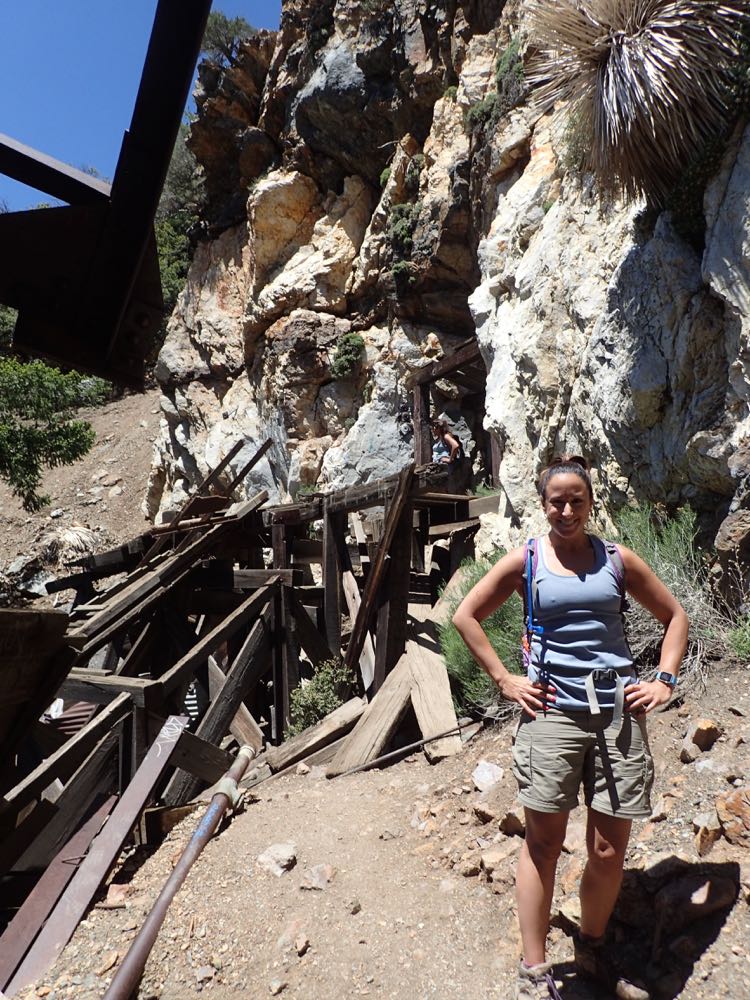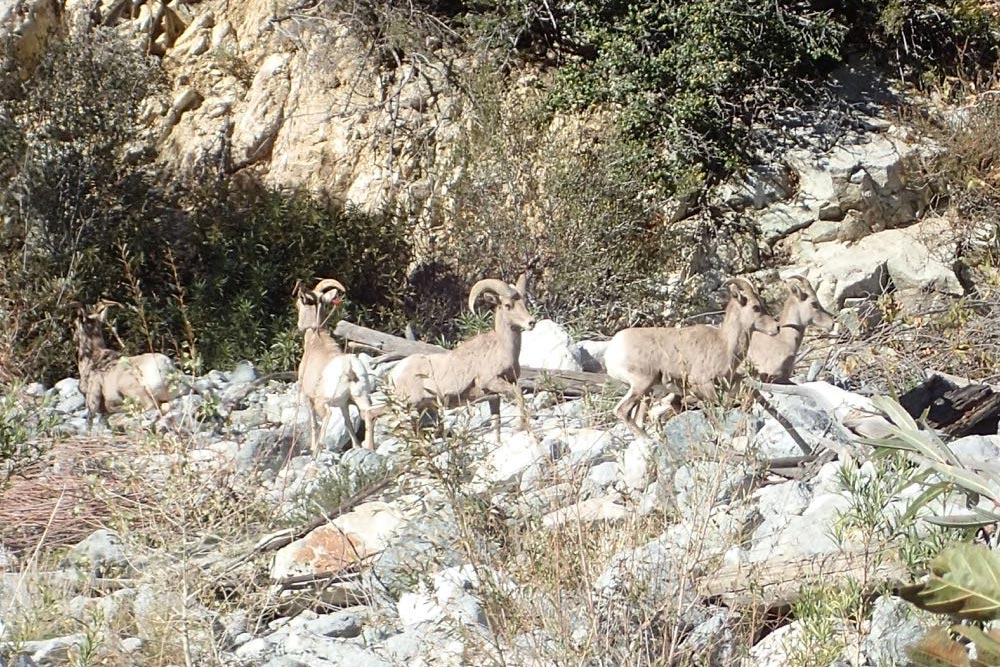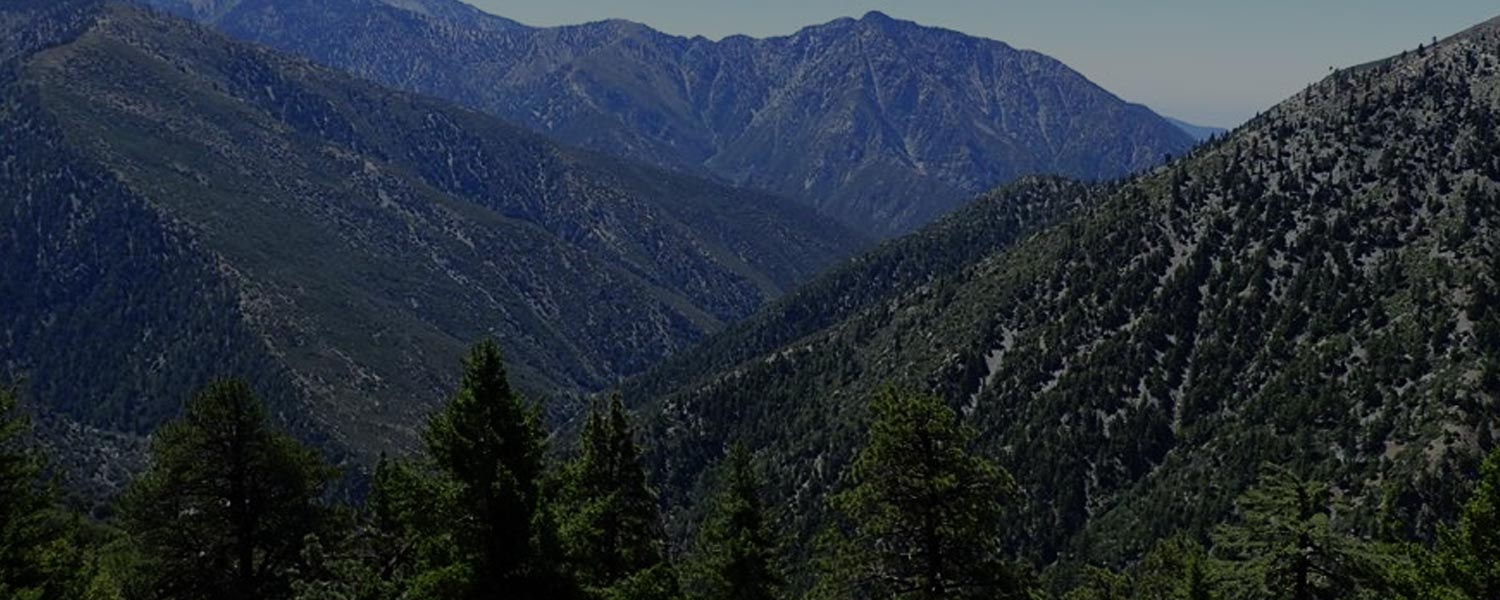
Big Horn Mine
Summary for Big Horn Mine Hike

Difficulty
Easy
Length
4 Miles Round Trip
time
2 Hours
Elevation Gain
650′
Summary
Hike to the surprisingly extensive remains of an abandoned gold mine high on the side of massive Mt Baden-Powell. The alpine scenery in this area of the San Gabriel Mountains is spectacular, and if you’re adventurous you may be able to explore the mine as well.
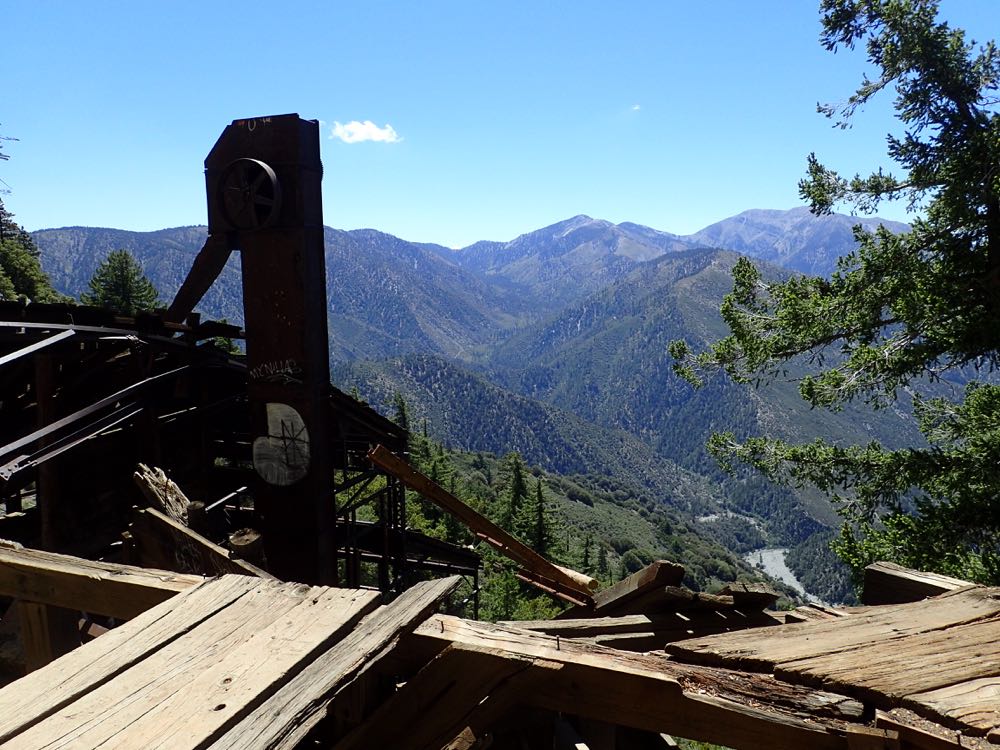
This hike originates at Vincent Gap, high above the East Fork of the San Gabriel River, which you will see displayed in particularly dramatic fashion far below as you approach. This area of the San Gabriel Mountains is truly spectacular, and you will want to spend some time snapping some pics, and studying the terrain if you’re into mountain topography. If you bring a map of the San Gabriel Mountains you can get a good feel for a large area since the view is so extraordinary.
Mt Baldy and Iron Mountain are prominent to the south and east, and you can clearly see from here the huge drainage area of the East Fork, which explains why there is substantial water flow in this river year round. Several miles away you can see the East Fork gorge as the river winds around the base of Iron Mountain to form its Narrows, in which is found the famous Bridge to Nowhere.
Several trails originate here at Vincent Gap, and note that it’s possible to start at this point, descend the trail down to Mine Gulch, and then go all the way down the East Fork to the Bridge to Nowhere and eventually to the parking area at East Fork Road. But that’s a backpacking adventure that will be covered in a future write-up. Looking down into the spectacular and mysterious gorge below should whet your appetite for further San Gabriel Mountain Hikes.
Big Horn Mine History
The Big Horn Mine is a tale of the ambition and determination of 19th century gold miners in a harsh mountain environment. The information in this section is obtained from the preeminent Southern California mountain historian, John W. Robinson, primarily from his amazing and carefully researched book Mines of the San Gabriels.
The East Fork of the San Gabriel River has a long and storied history of gold mining. Conventional lore has it that the first miners arrived from the Sierra Nevada mines in 1854, but it was not until 1859 that major placer deposits were discovered. The East Fork was immensely popular and quite productive, and a gold boom occurred from 1859 – 1862. The mining attempts never stopped, but continued, although at a reduced level, for many years.
The Big Horn Mine was discovered by Charles “Tom” Vincent – after whom Vincent Gap and Vincent Gulch are named – in 1895, after many years of trying to find the Mother Lode that fed the rich deposits down in the East Fork. He named it the Big Horn Mine because he was hunting big horn sheep on the day of its discovery. Vincent was a true mountain man, and lived in a log cabin which he built himself, high up in Vincent Gulch.
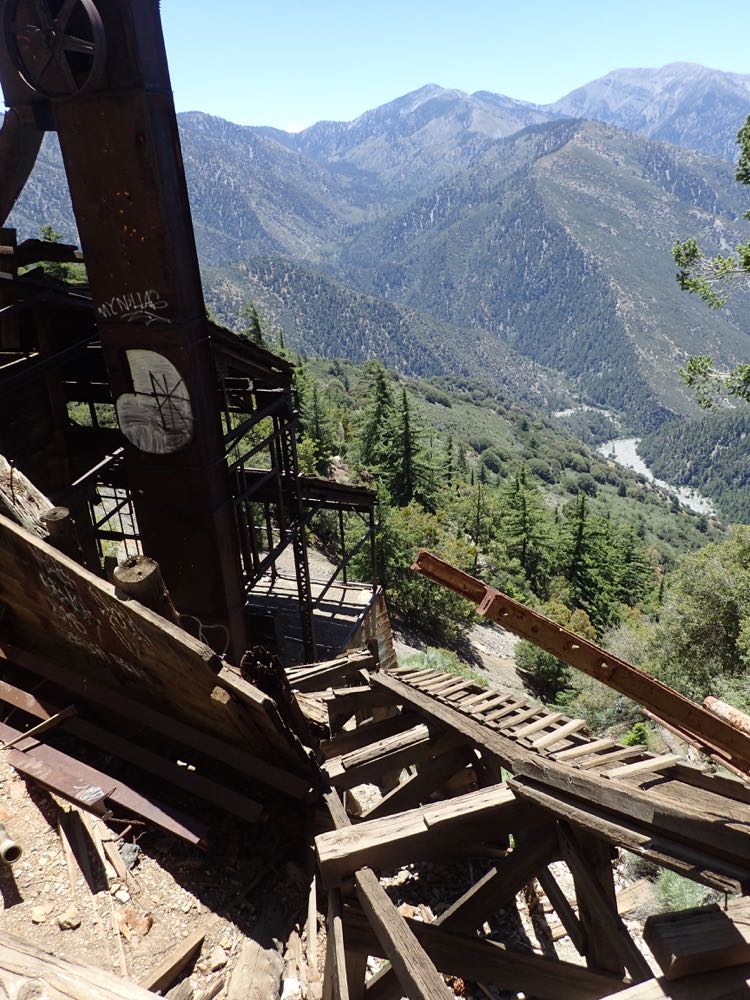
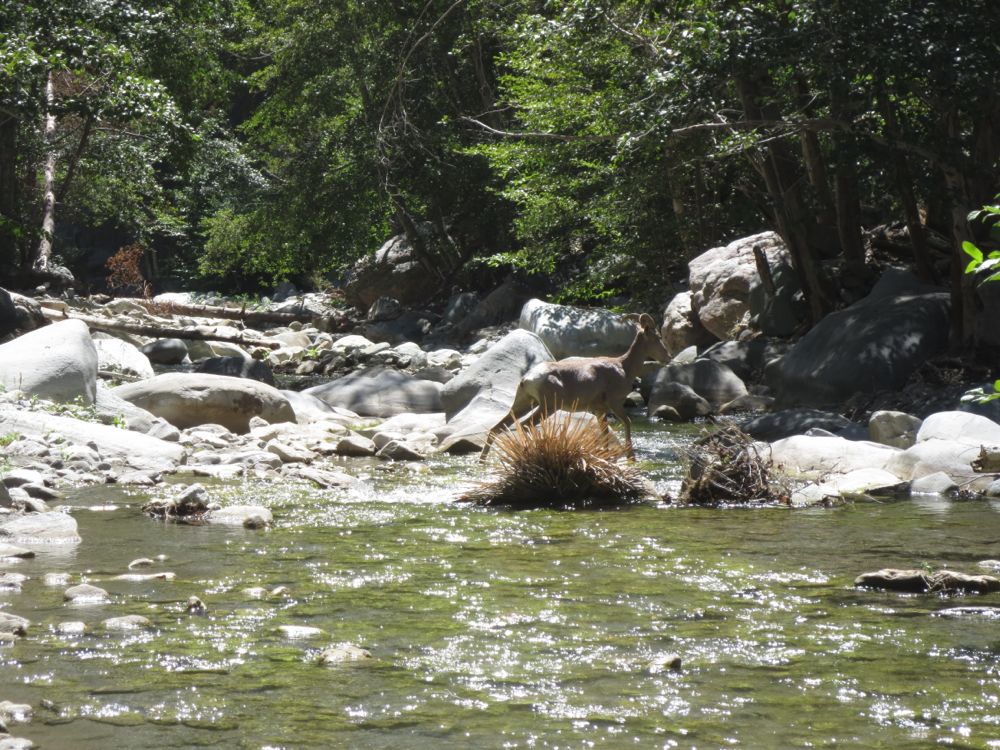
In 1902 Vincent and his partners sold their claim to the Lowell and California Mining Company. Under this ownership the Big Horn Mine went through its most productive years. They hacked the road along the mountain side, constructed a 10-stamp mill to crush the ore on site, and blasted many of the tunnels and shafts deep into the mountain, following the gold-bearing quartz veins. Deep in the mine the ore was loaded on carts which were rolled on tracks (which can still be seen near the entrance) to the stamp mill, were the ore was crushed. The ore was then loaded onto wagons for the long journey down the mountains for further processing.
The Big Horn Mine was a profitable venture for almost a decade. At its peak from 1903 – 1906 over fifty men were employed at the mine. Eventually, as with all mining ventures in the San Gabriel Mountains, the veins were lost or played out, and the mine began losing money and was abandoned.
In the 1930’s there was a brief rebirth when the American Metal Company leased the mine and put in a 50 ton mill operated by electrical power supplied up the mountain by Southern California Edison. The returns were not worth the expense, and the venture was abandoned in 1936. There was another burst of activity in 1941, but then the mine was shut again.
The ownership of the mine changed several times from then until this century, with some exploratory work done now and again, but it was never again a viable operation.
The Wilderness Land Trust negotiated with a private mining company to buy the 277-acre property, and in 2007 the Trust secured long-term financing for the entire parcel. Once again, however, the siren song of the Big Horn Mine was heard. The rising price of gold made reopening the mine an attractive option for the Wilderness Land Trust.
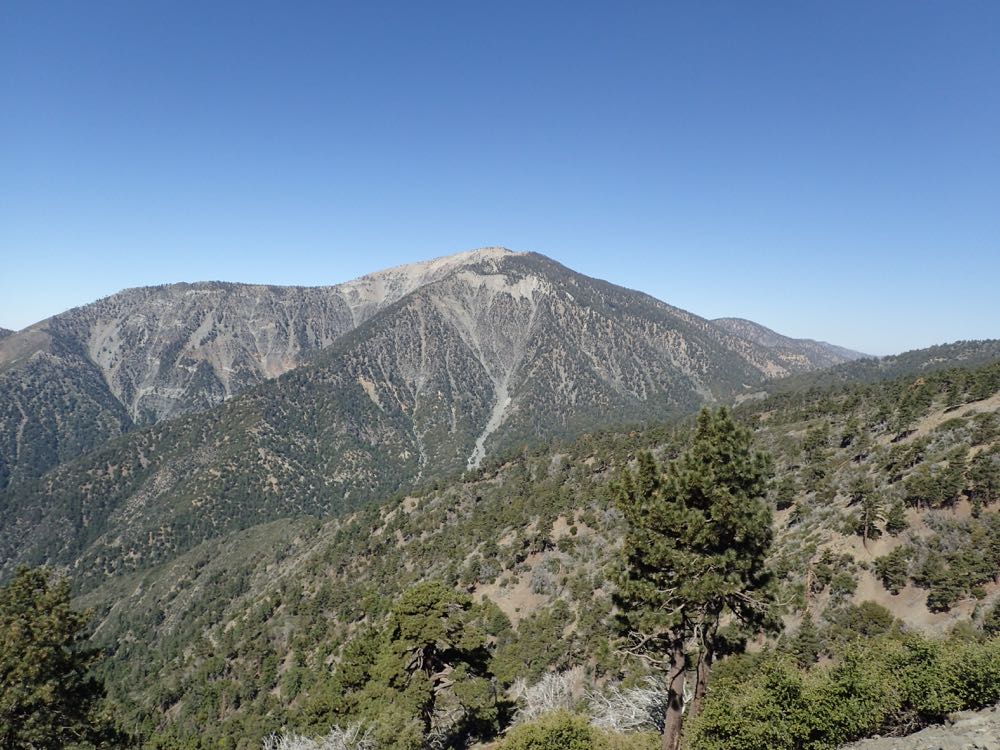
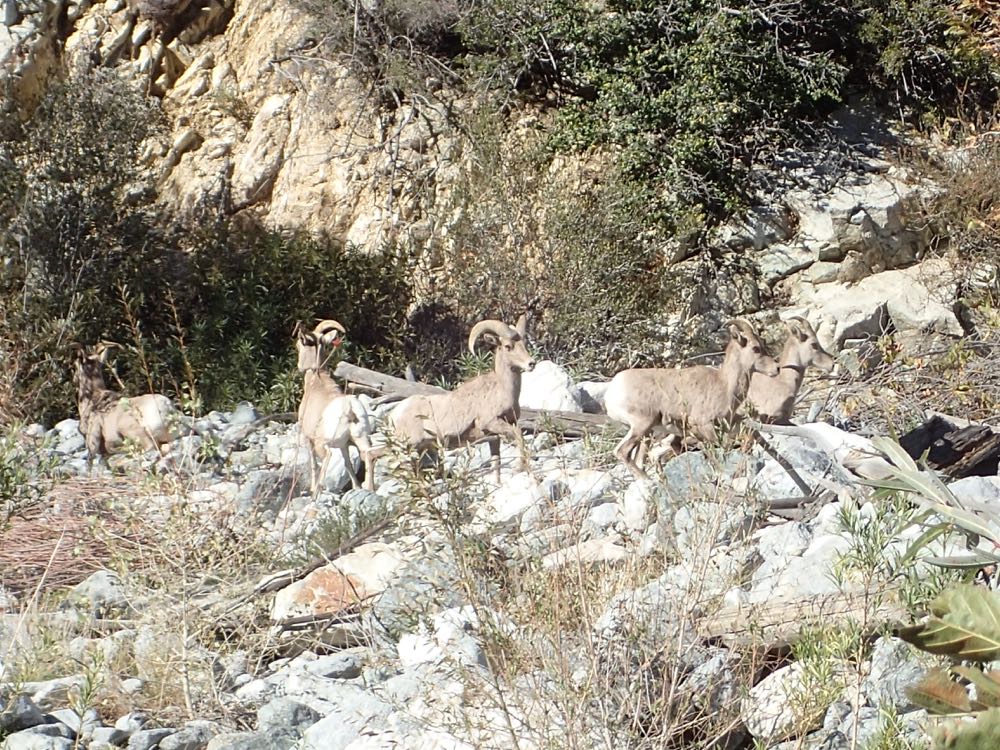
Tests revealed that much gold lies deep within the mine – however, it is buried deep within the hard rock of the mountain. Even with modern mining methods, it would be extremely difficult to mine. Because of this, the Trust optioned to transfer Big Horn Mine to the United States Forest Service.
According to a Siskon Corporation confidential report of 1979, the Big Horn Mine was the largest producer in the mining district. The Big Horn Mine in its history produced 3,701 ounces of gold and 2,430 ounces of silver, in addition to 1,357 pounds of copper. That’s a helluvalotta precious metal, in my humble opinion.
Today the Big Horn Mine stands desolate yet proudly high in the beautiful San Gabriel High Country, its rich and storied history now largely silent, yet it remains an interesting and exciting destination for Southern California hikers.
Directions to Trailhead for Big Horn Mine Hike
Detailed Description for Big Horn Mine Hike
Once you park at the large lot at Vincent Gap, head to the end of the lot next to the bathroom where the trail head is located.
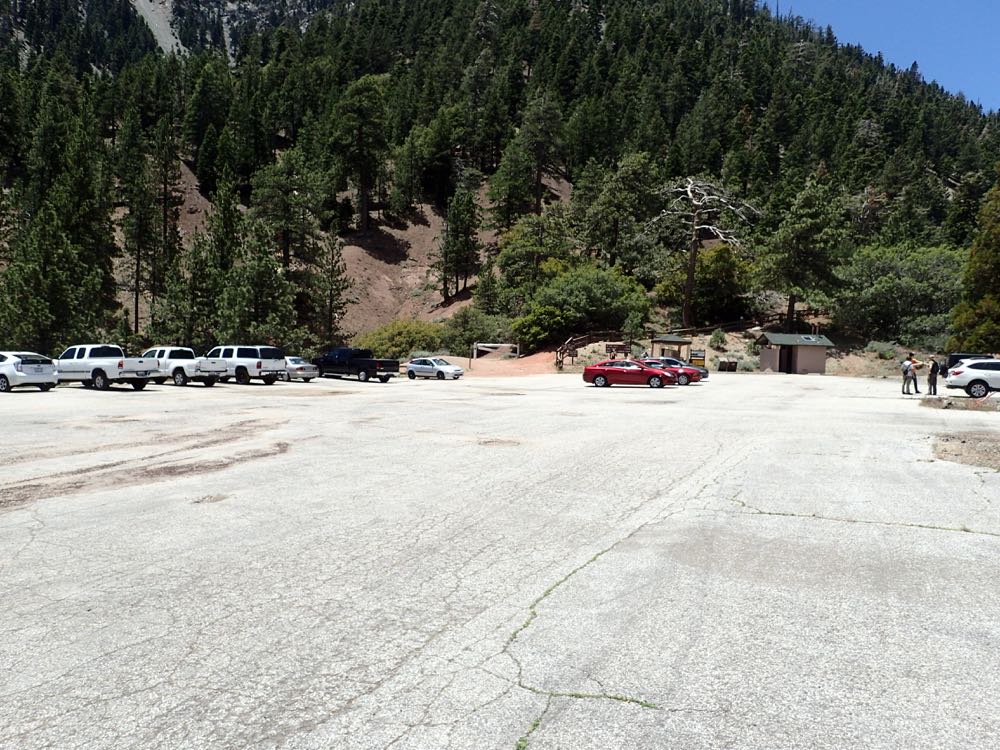
Although our hike is on excellent and well-travelled trail, it is not signed since it’s not a Forest Service maintained trail. But it is exceptionally easy to follow – just go to the left at the trail sign here pointing to Mine Gulch.
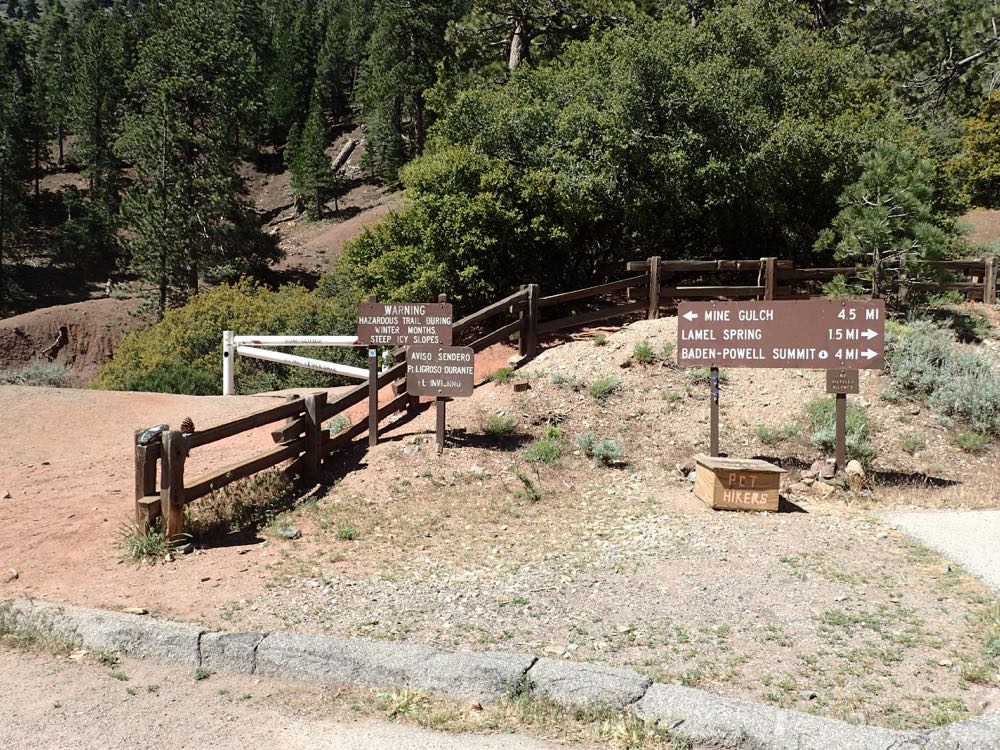
You will follow the wide fire road, and after only about 200 yards you will see the Mine Gulch Trail break away from this road down sharply to the left. You will simply stay level on the road and continue ahead along the side of the mountain.
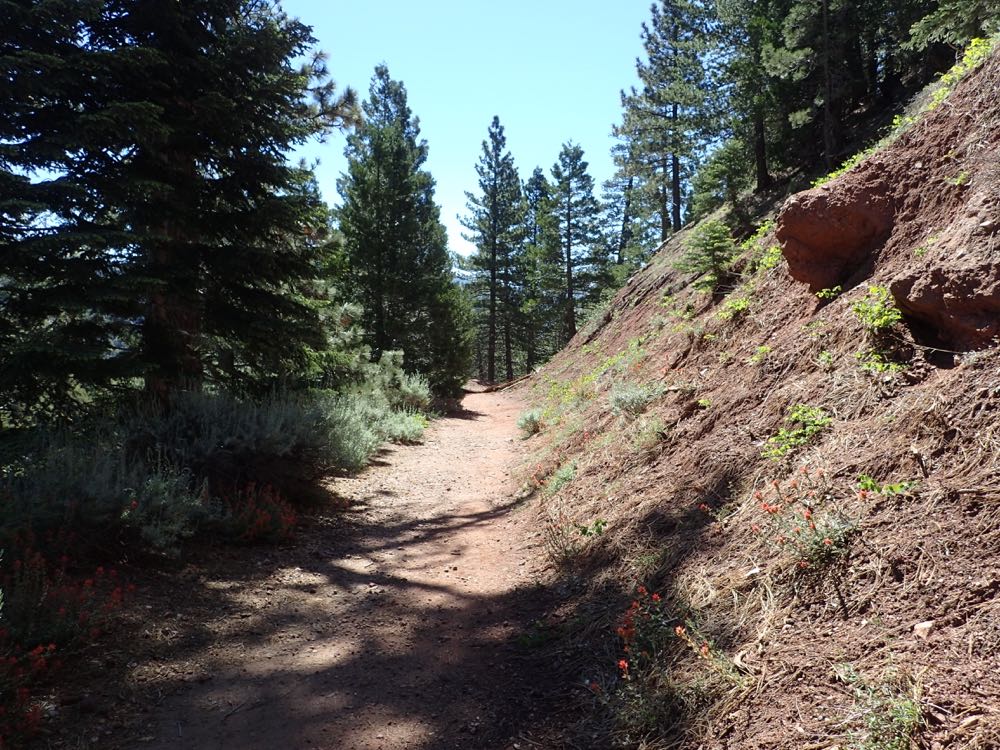
You are treated to more dramatic views of the East Fork gorge and the highest peaks of the range to the east as you proceed. On your right the massive alpine bulk of mighty 9,406′ Mount Baden-Powell looms above.
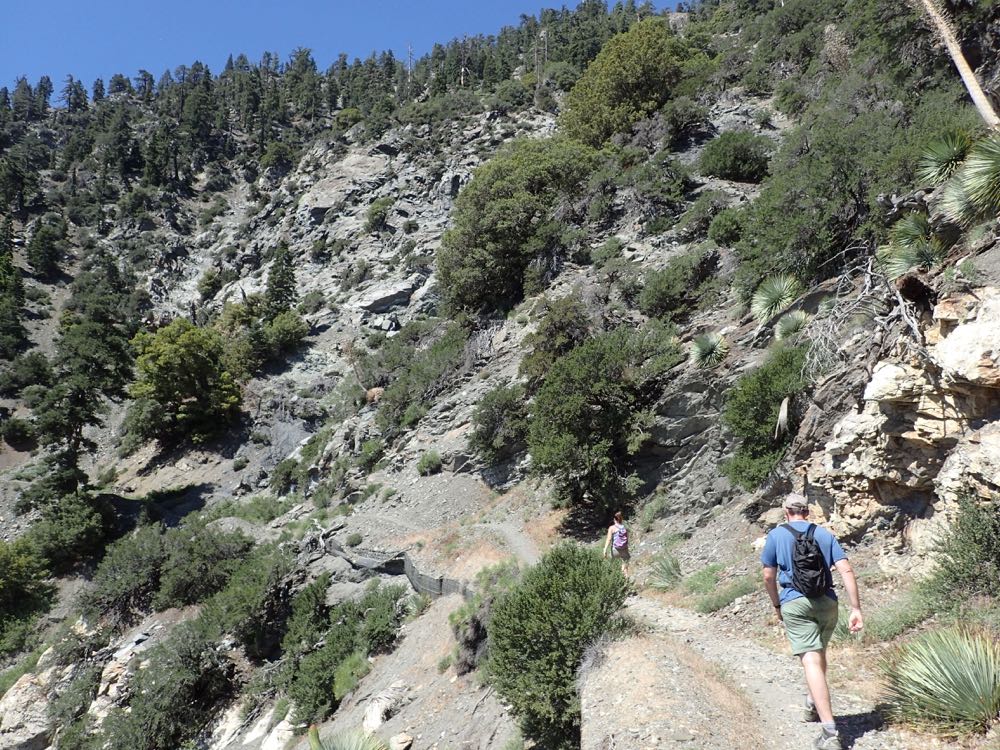
After about 1 mile you will encounter one of the mine tunnels just to the right of the trail. Often water is flowing from this tunnel. You can look inside here, but the main mine site is another .6 mile, so continue on.
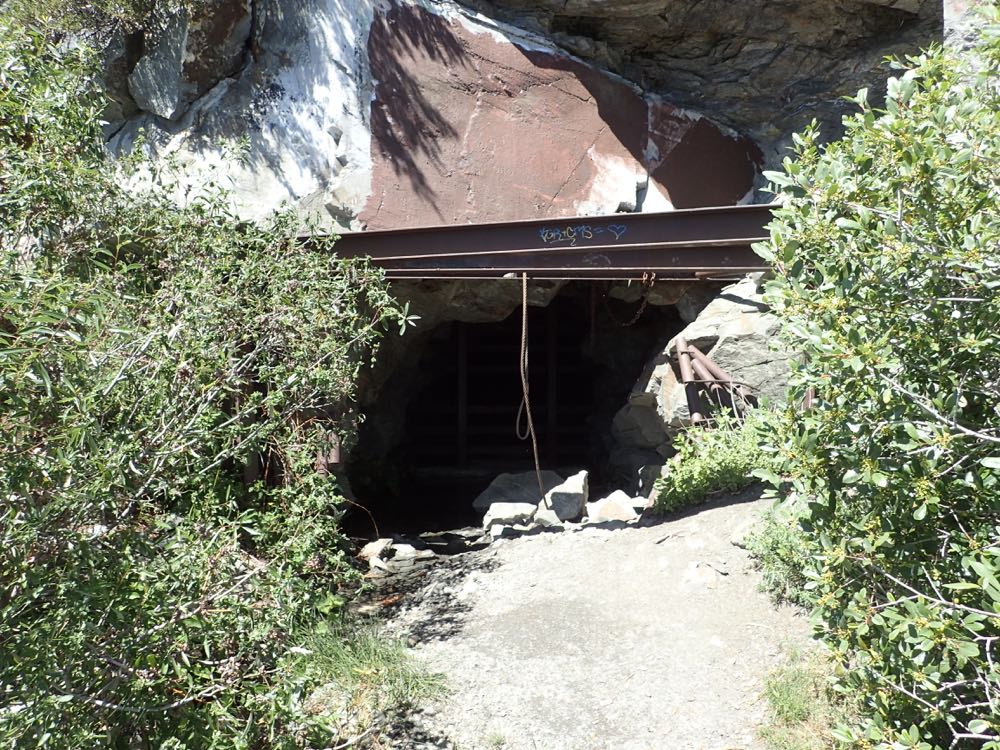
You will now travel up and crest a small ridge which offers some further spectacular and more open views of the mountains and valley below. Now the trail turns sharply to the right.
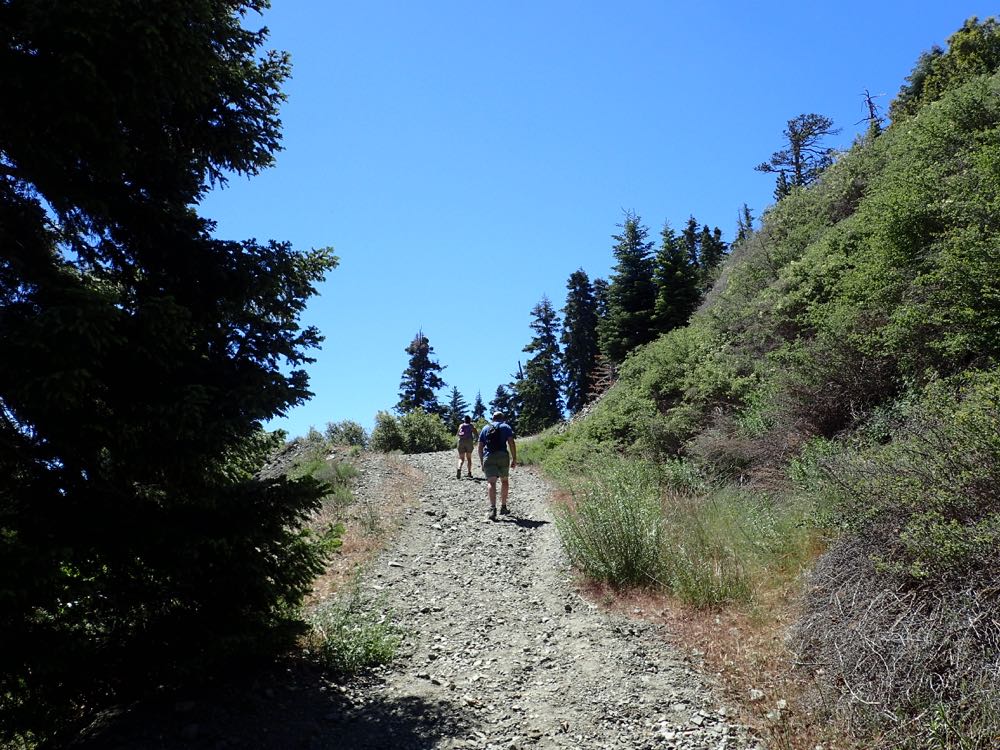
After another .3 mile or so you will see the surprisingly large remnants of the mine complex appear.
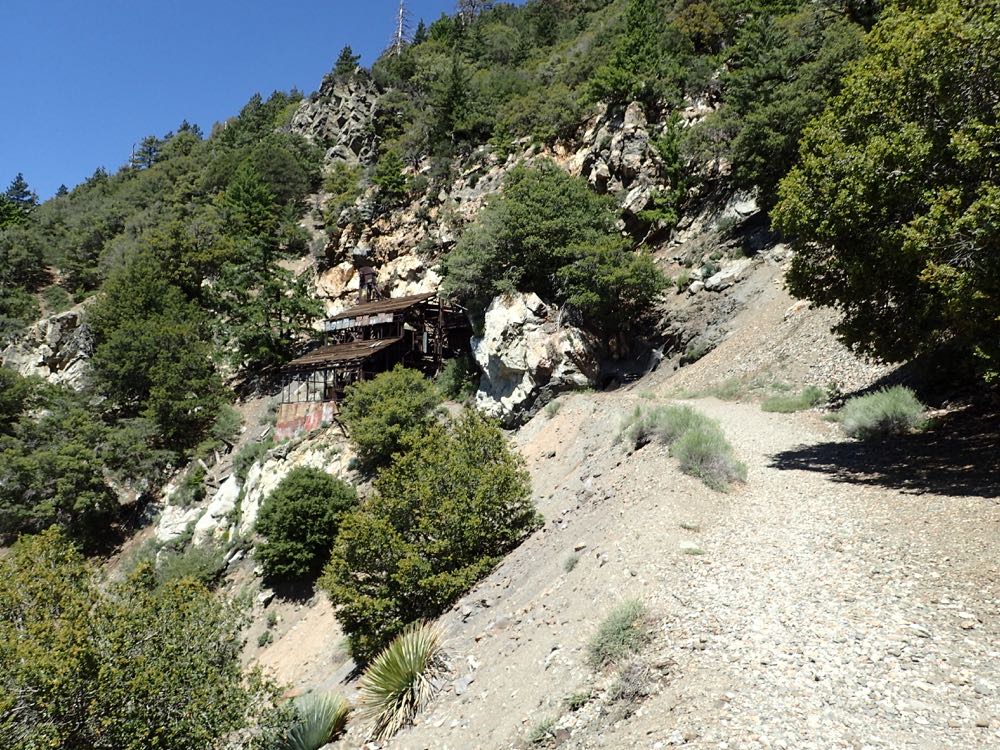
Just to the right of the mine structure is a mine tunnel. This tunnel connects with the main mine tunnel which is located above and to the left of the mine structure.
Note that if you decide to proceed and explore any further be aware that the mine structures are not maintained , in a dangerous state of deterioration, and subject to collapse. If you decide to enter the mine itself, note that all abandoned mines are extremely dangerous places and hazards include but are not limited to tunnel collapse, bad air, falling into hidden shafts, getting lost, etc. See this Wikipedia article on mine exploration for a further discussion of potential dangers inherent in this activity.
Anyway, if you climb up on the structure, stay to the right and then up and to the left to reach the upper mine tunnel which is just above and on the left side of the structure.
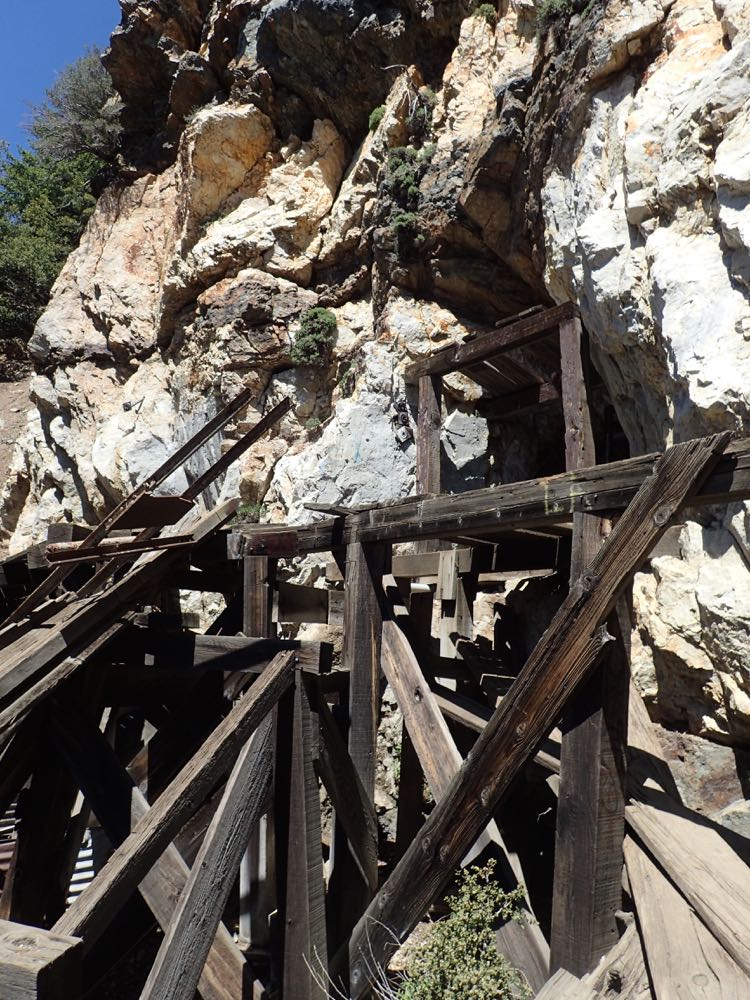
There were no signs indicating that the area was off-limits at the time of this visit, but the entrance has a steel gate set into the rock. The gate has some missing bars that a person could fit through. Several years ago these gates were not in place and one could access the mine freely.
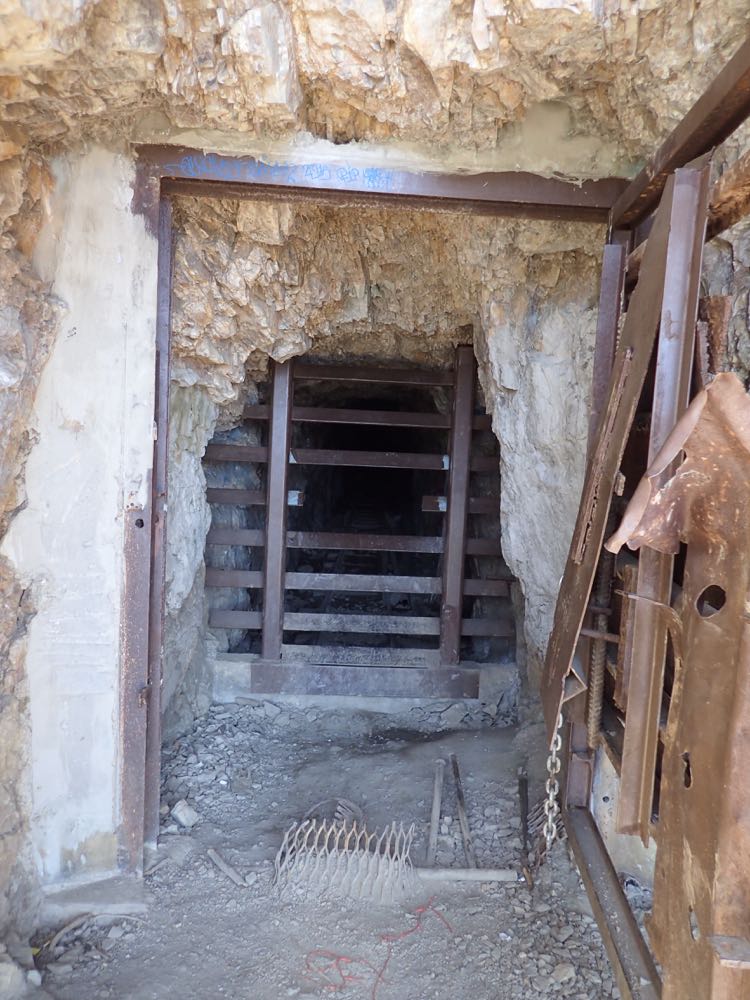
Once inside you will find that the mine tunnels are amazingly large and extensive. There is no light in the Big Horn Mine so make sure you bring a reliable light source and extra batteries. One source that has mapped the mine states that there are 8,700′ of passages, and that an additional 3,500′ of passages once existed that are now buried somehow. So you get an idea of the remarkable effort put forth to create these tunnels in solid granite.
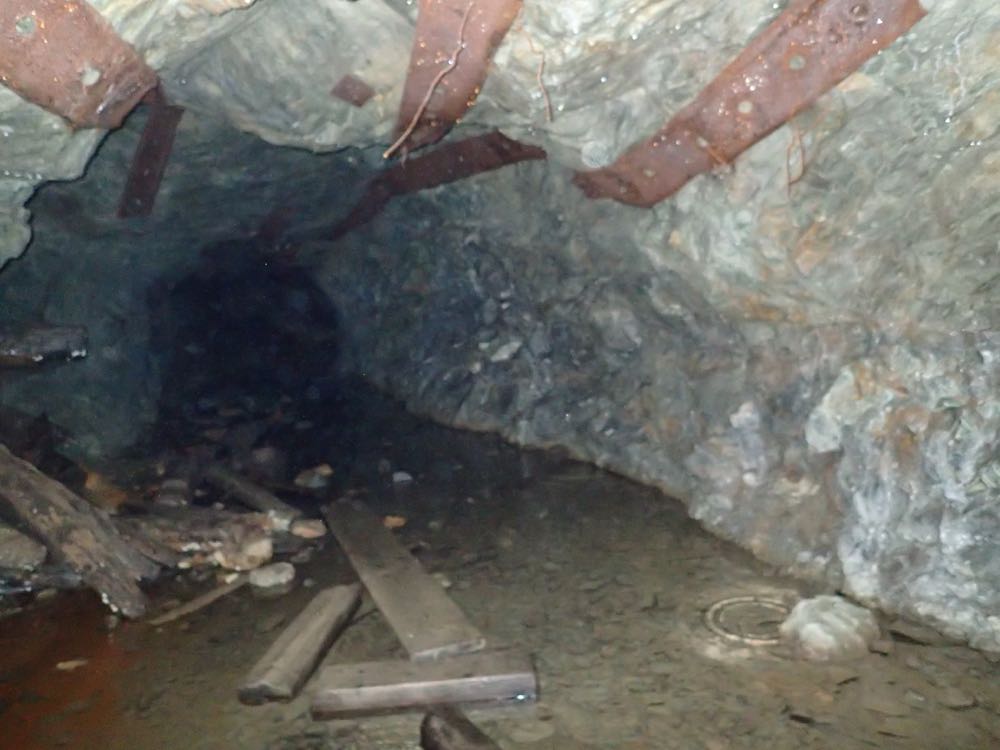
Once you have enjoyed your adventure to this interesting and unique piece of Southern California mining history, simply retrace your steps back to your vehicle.

